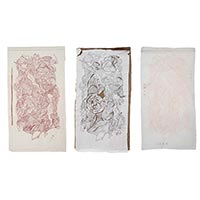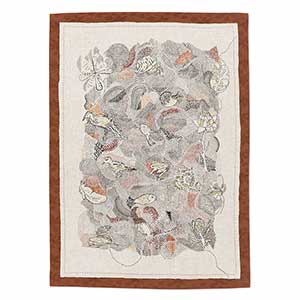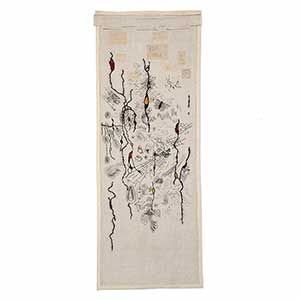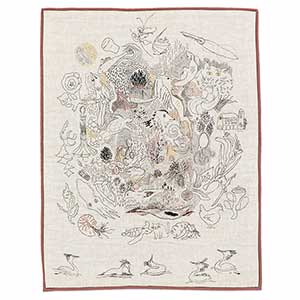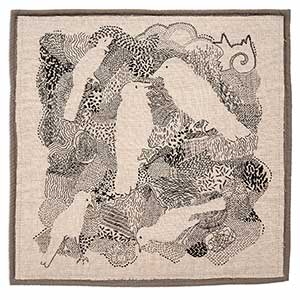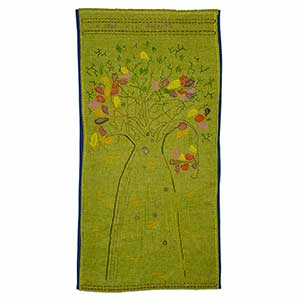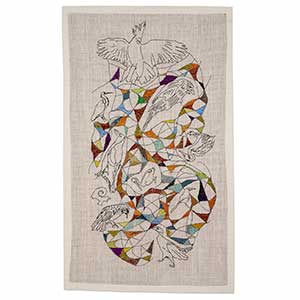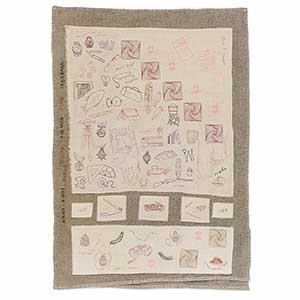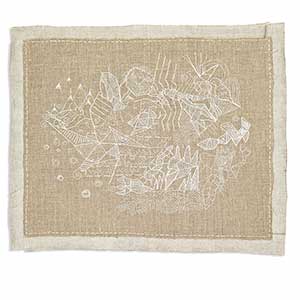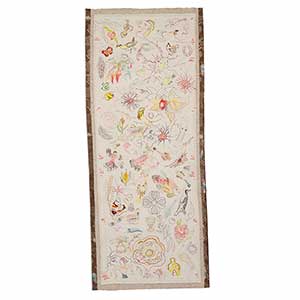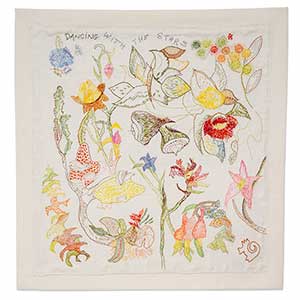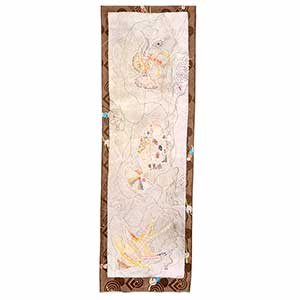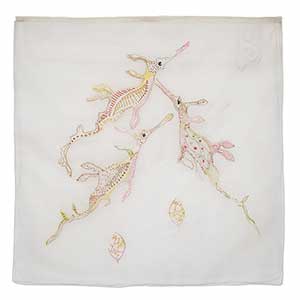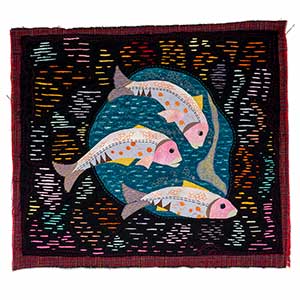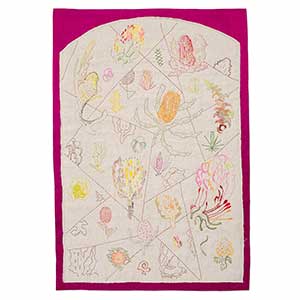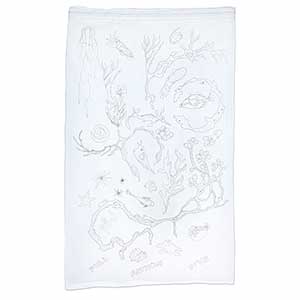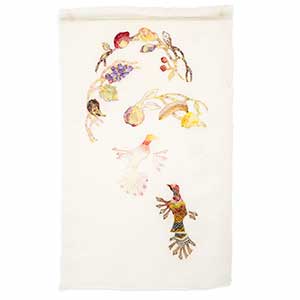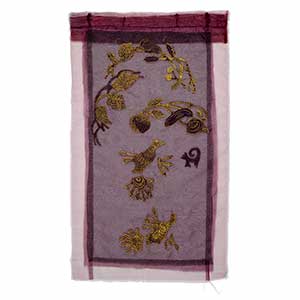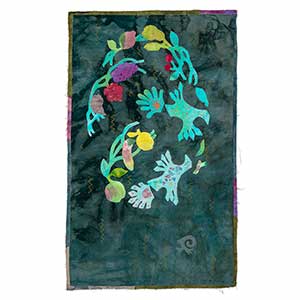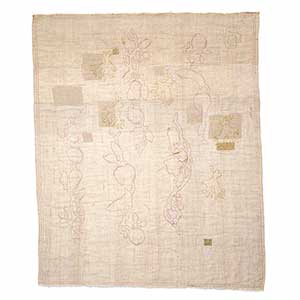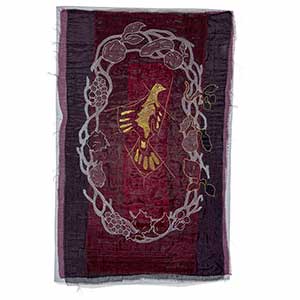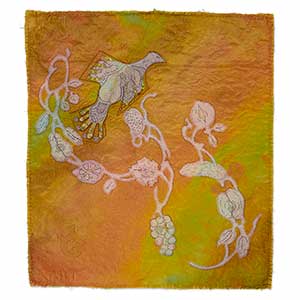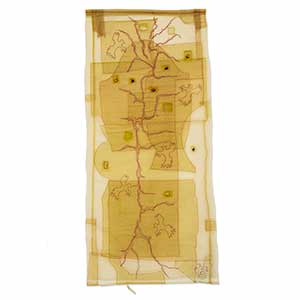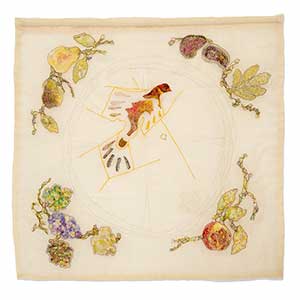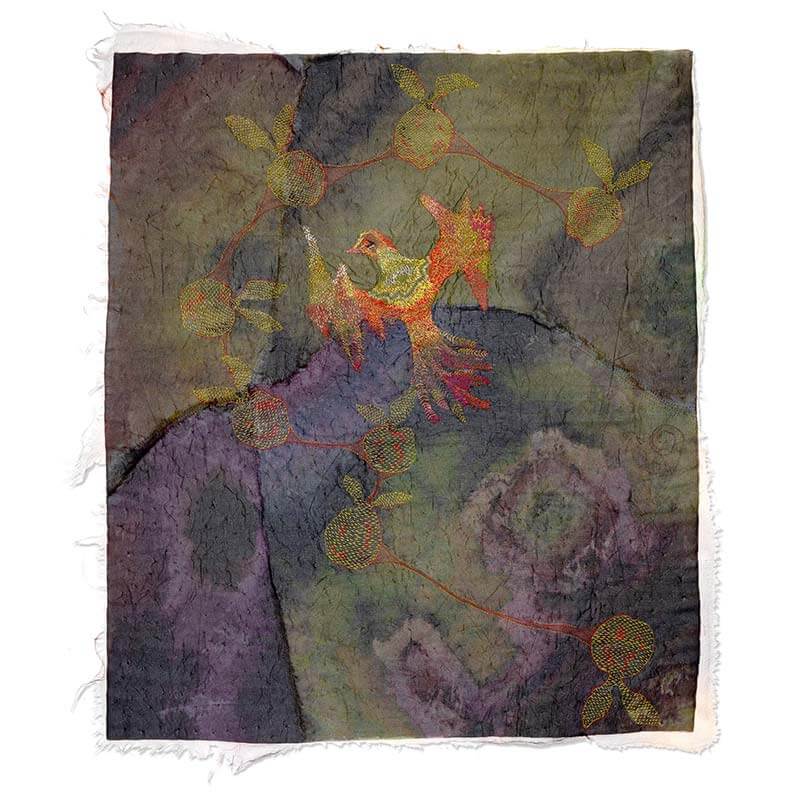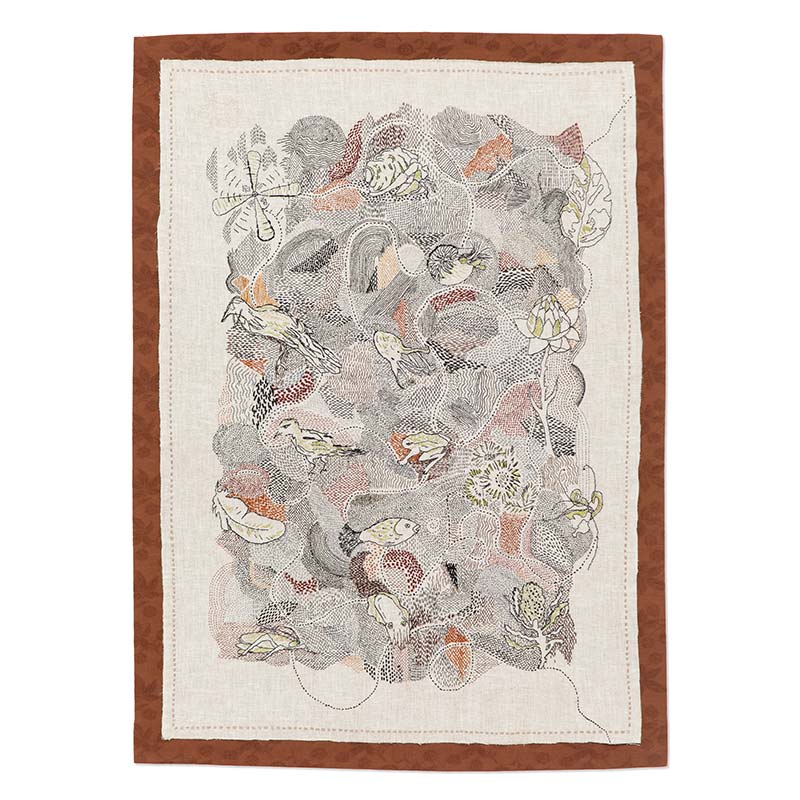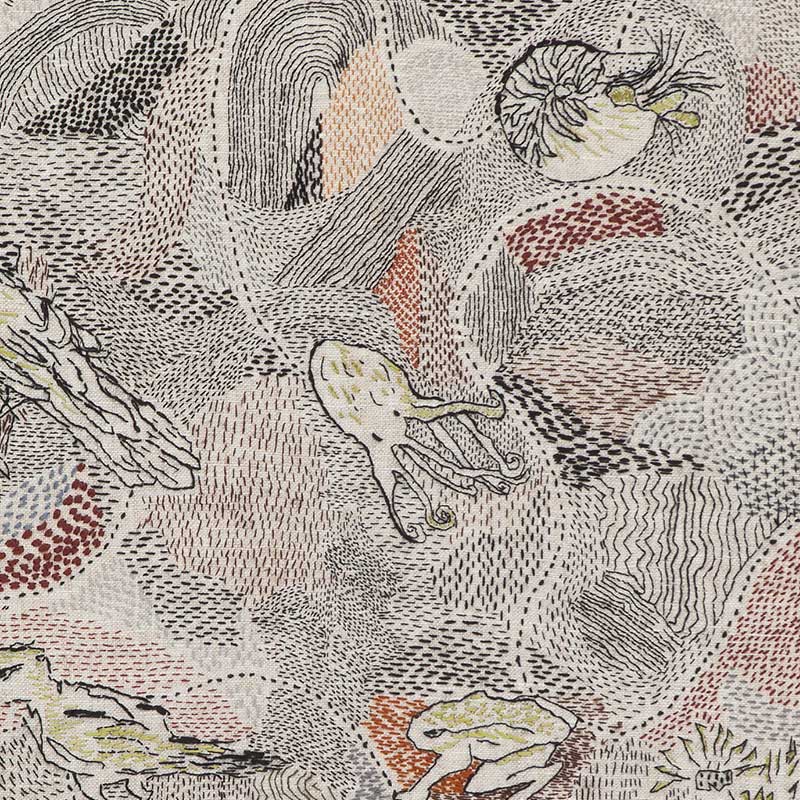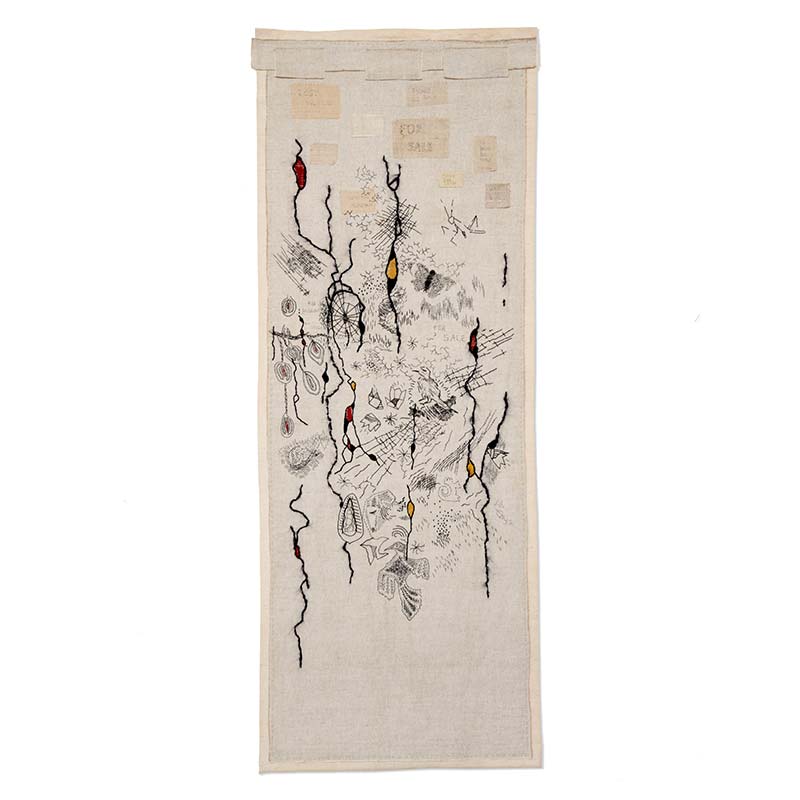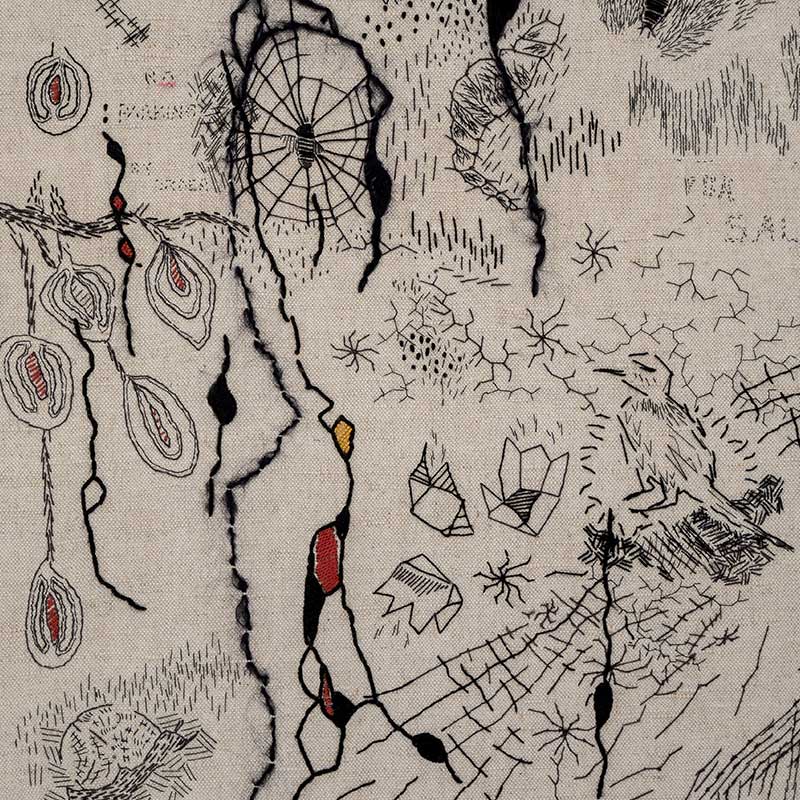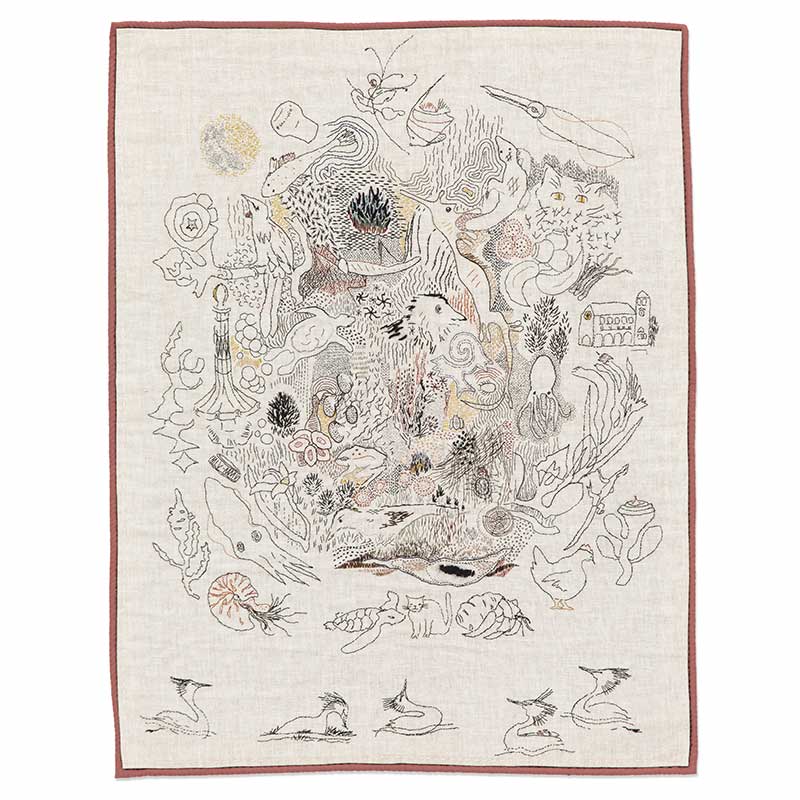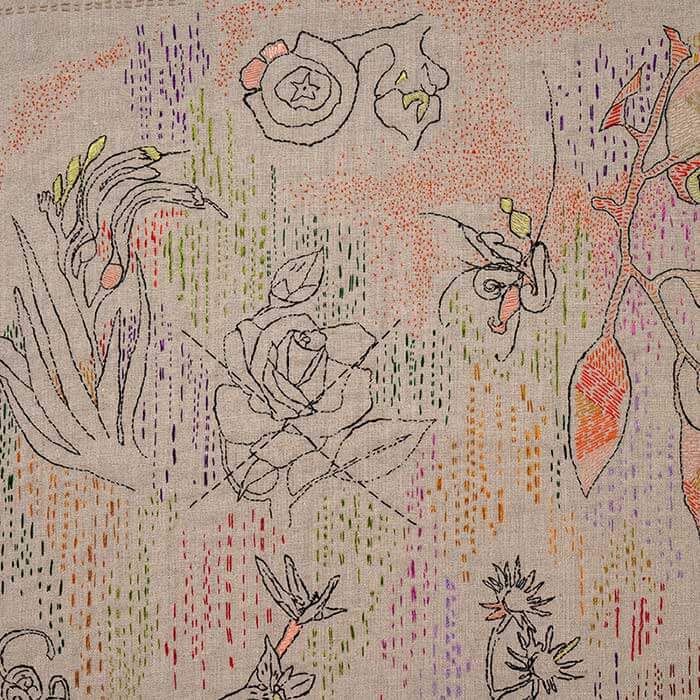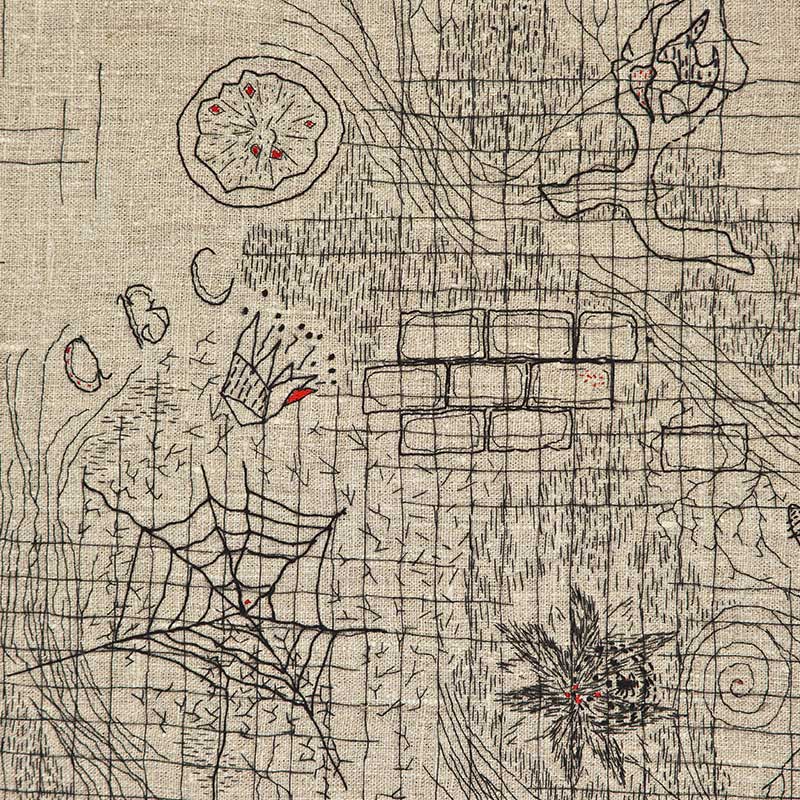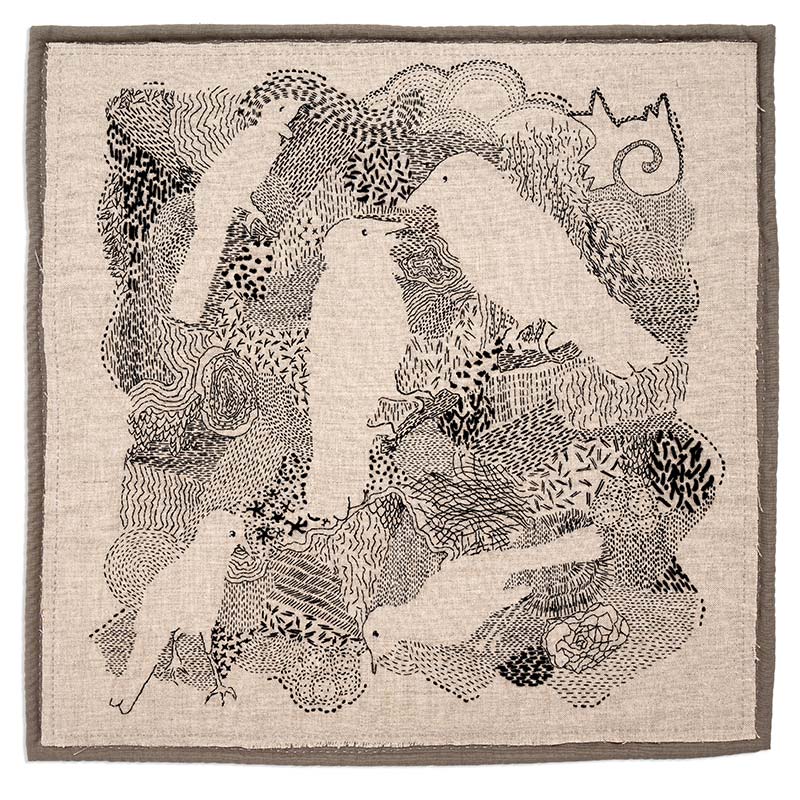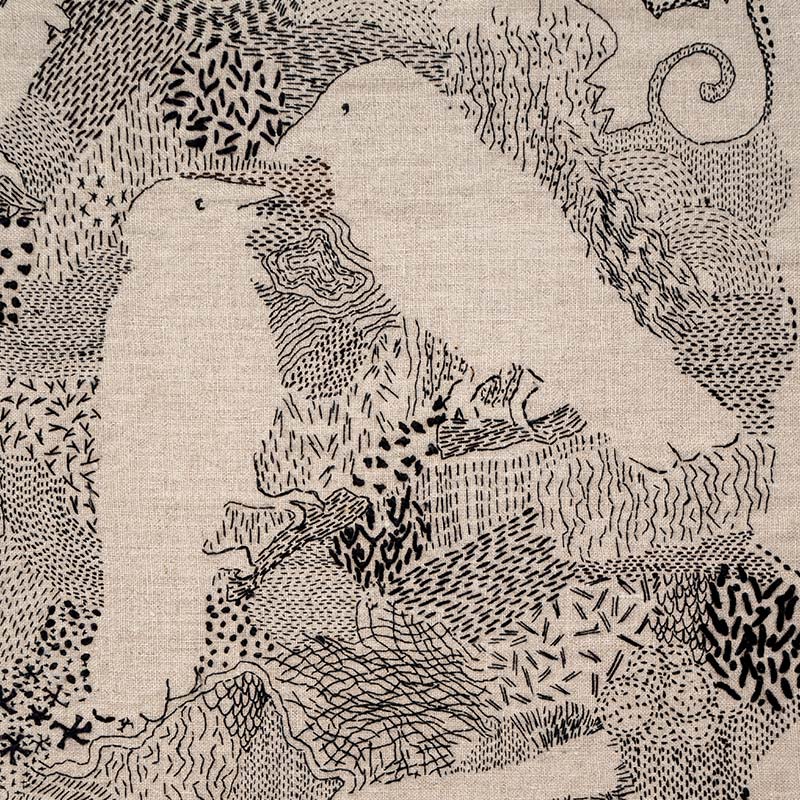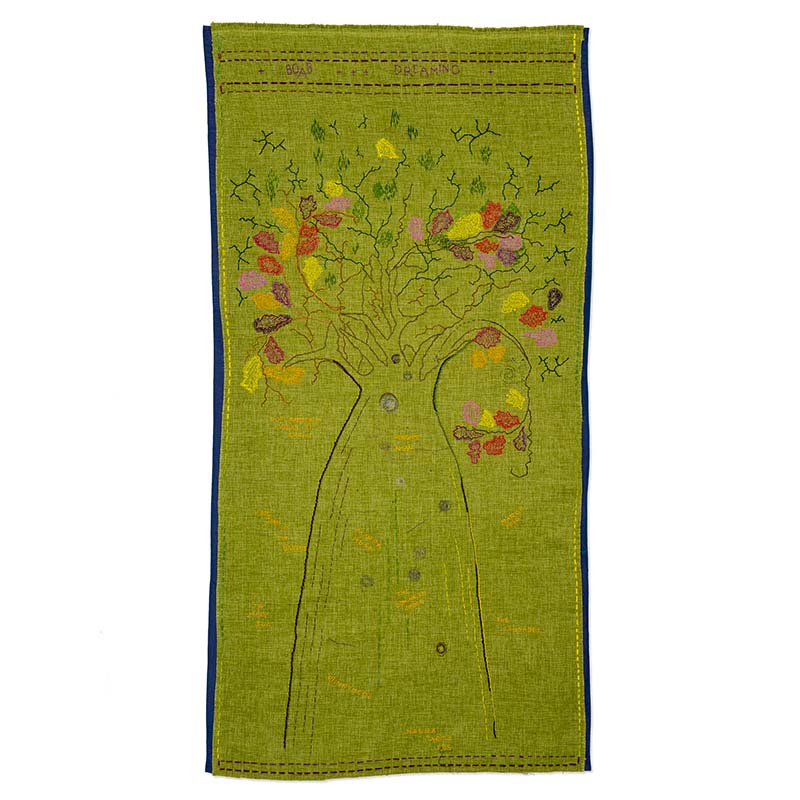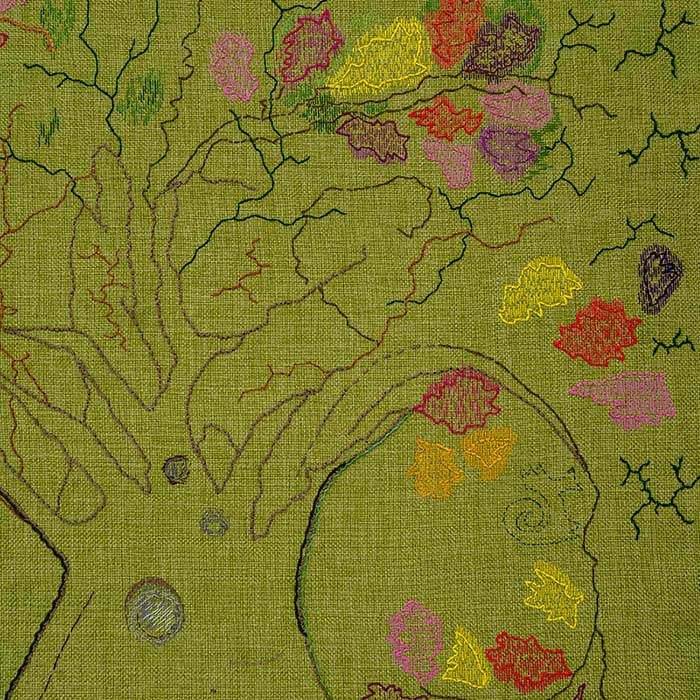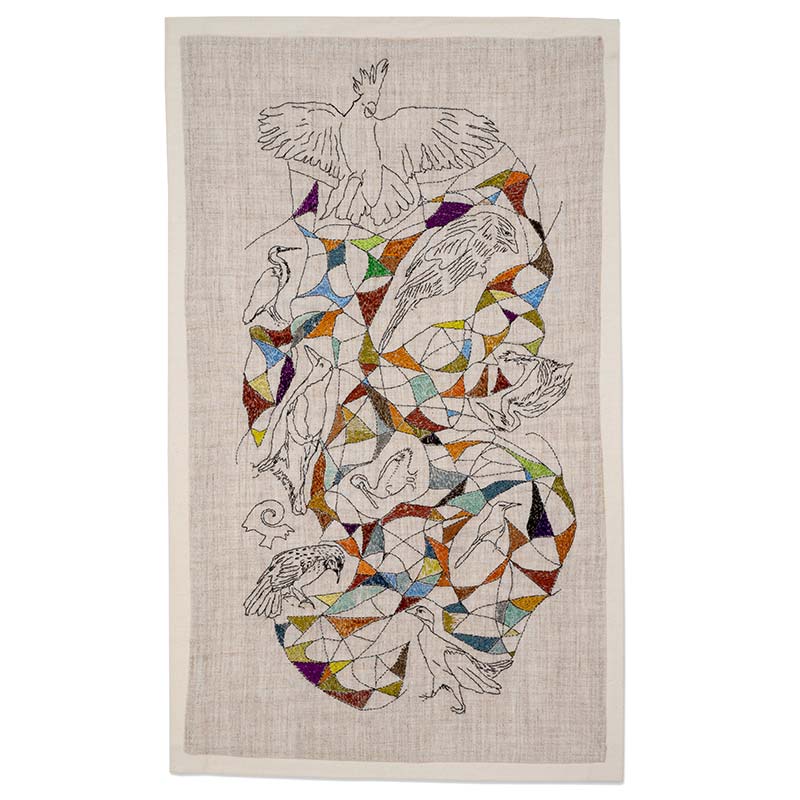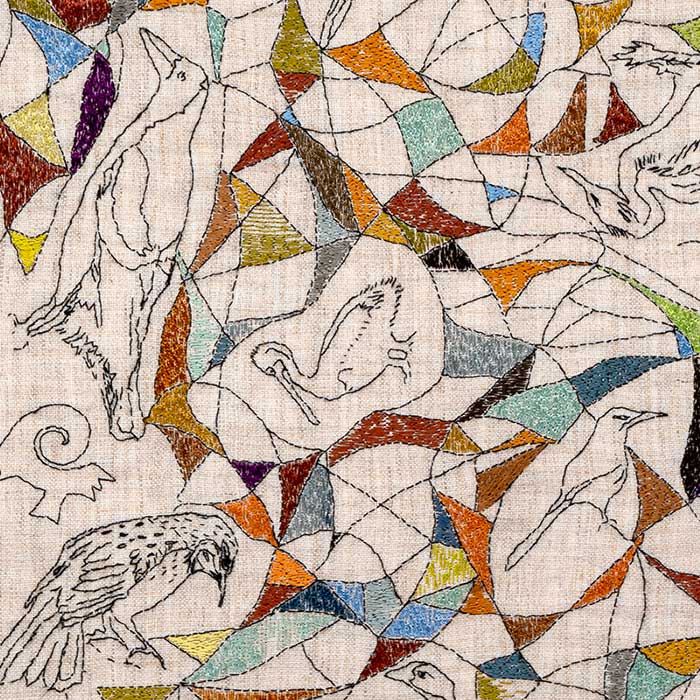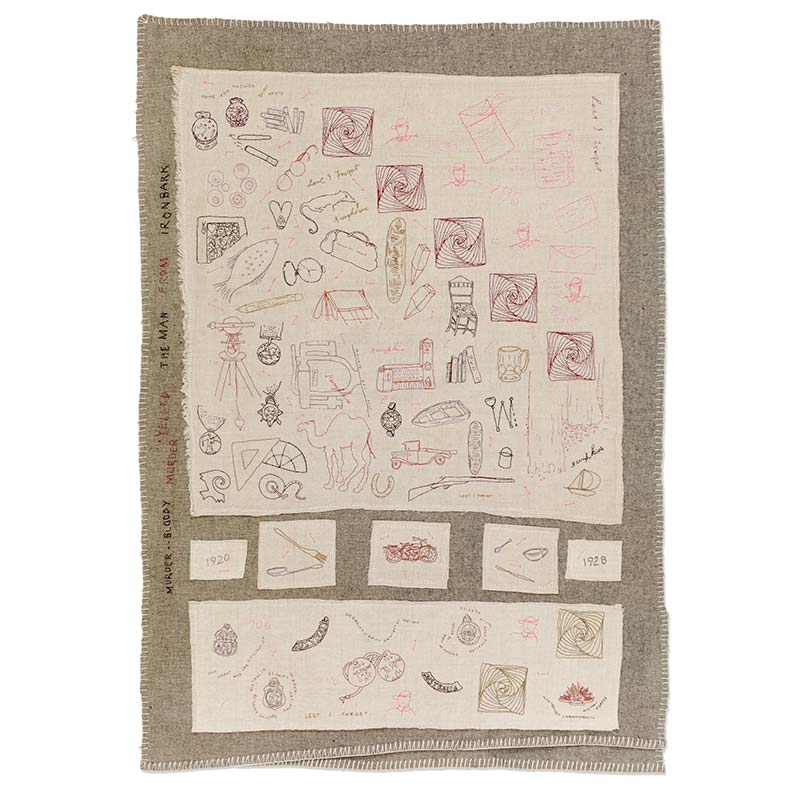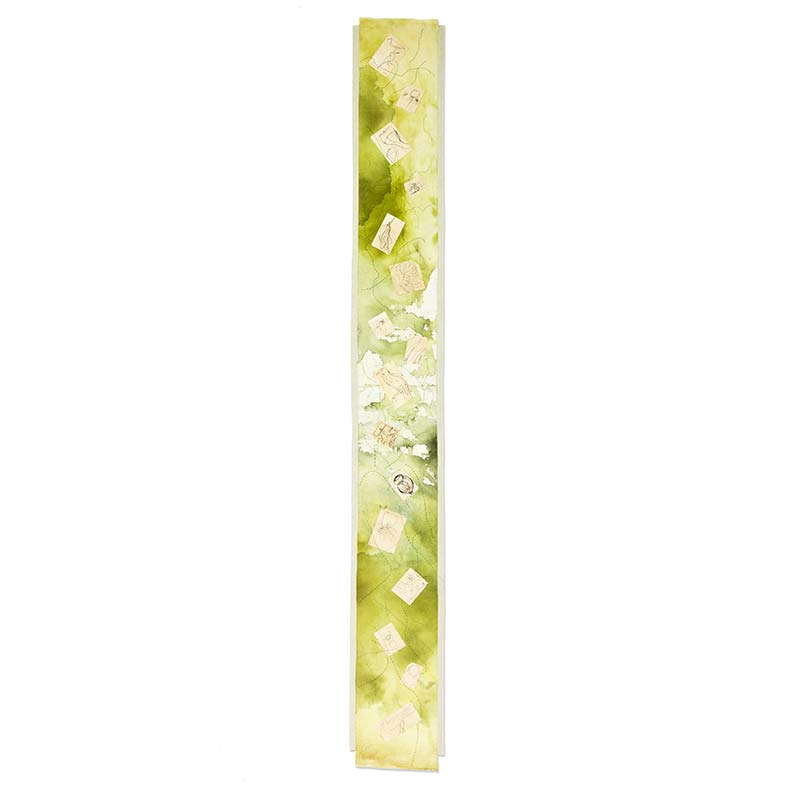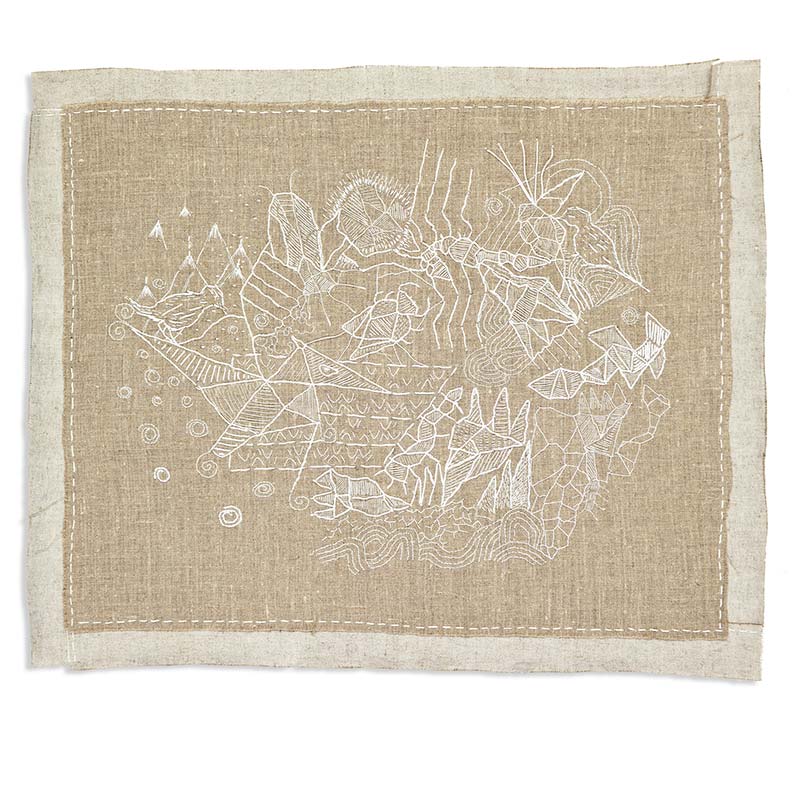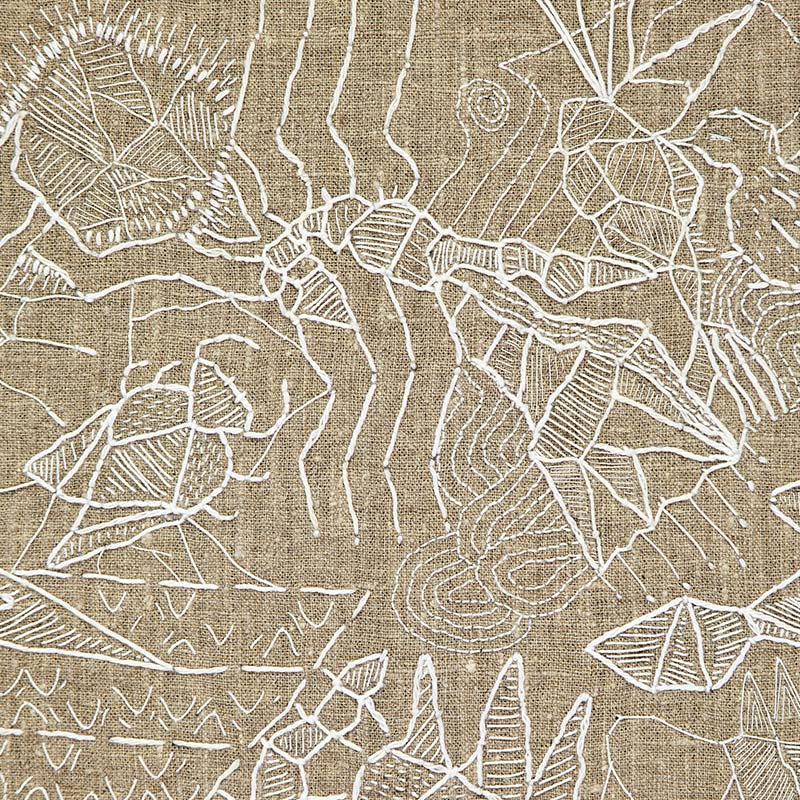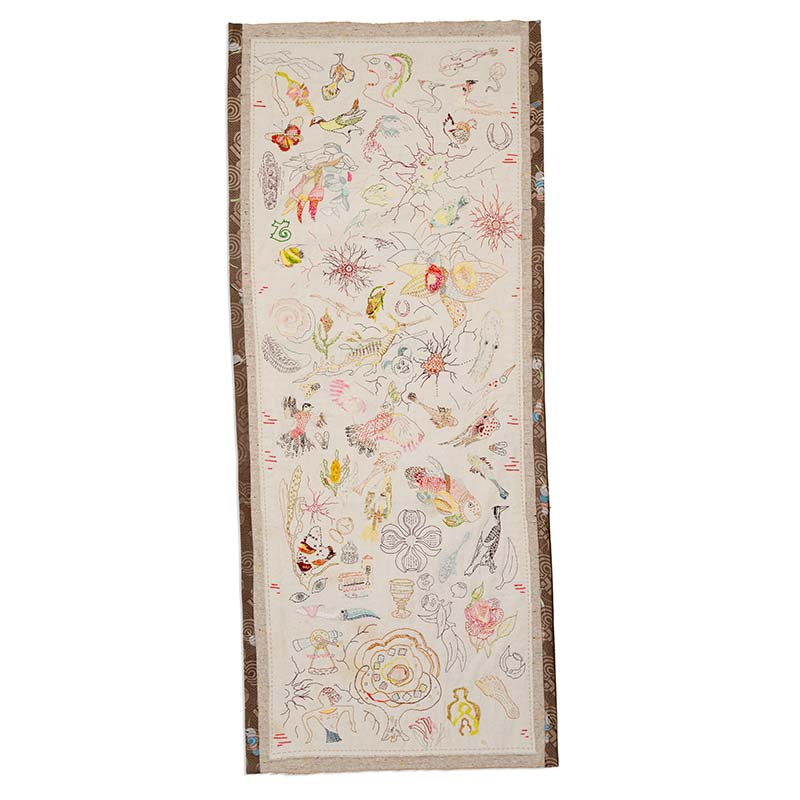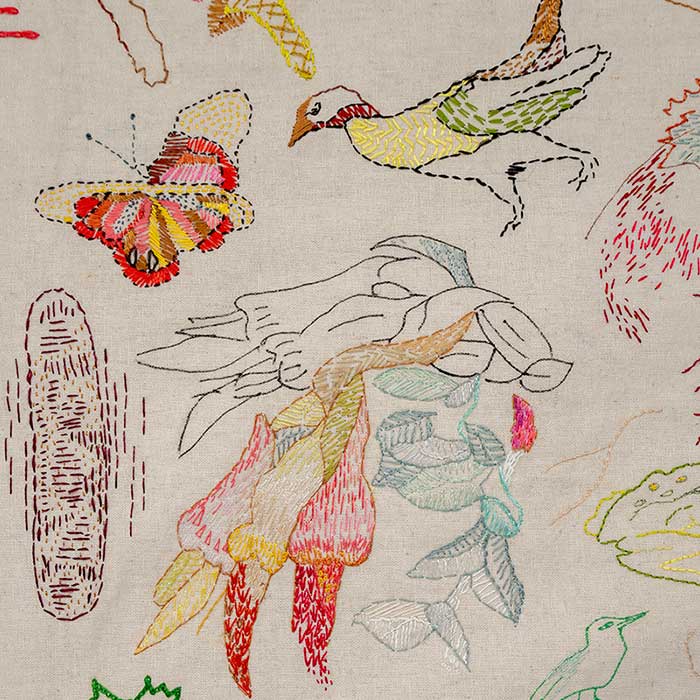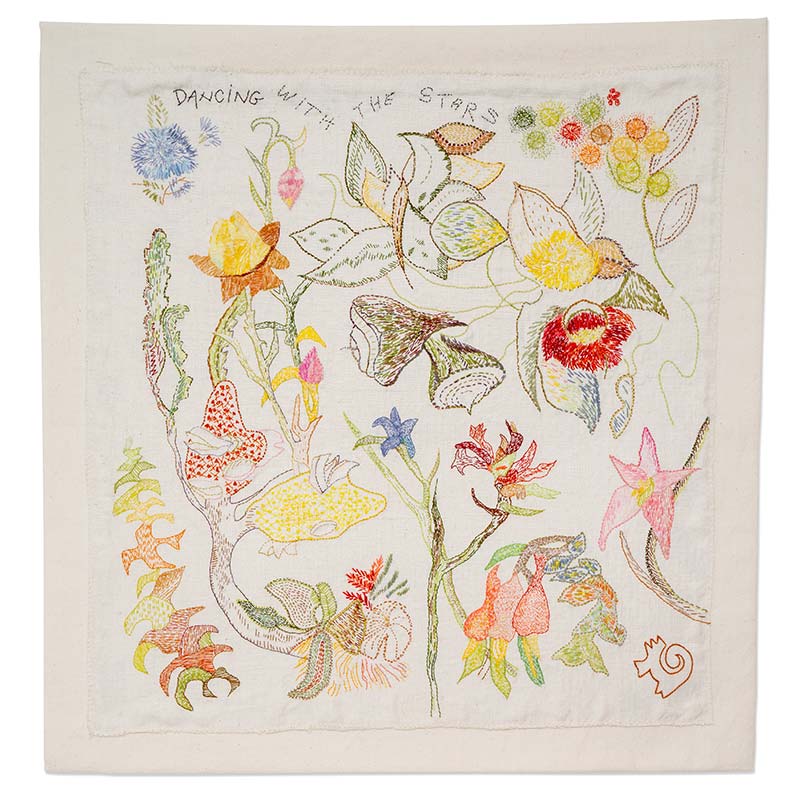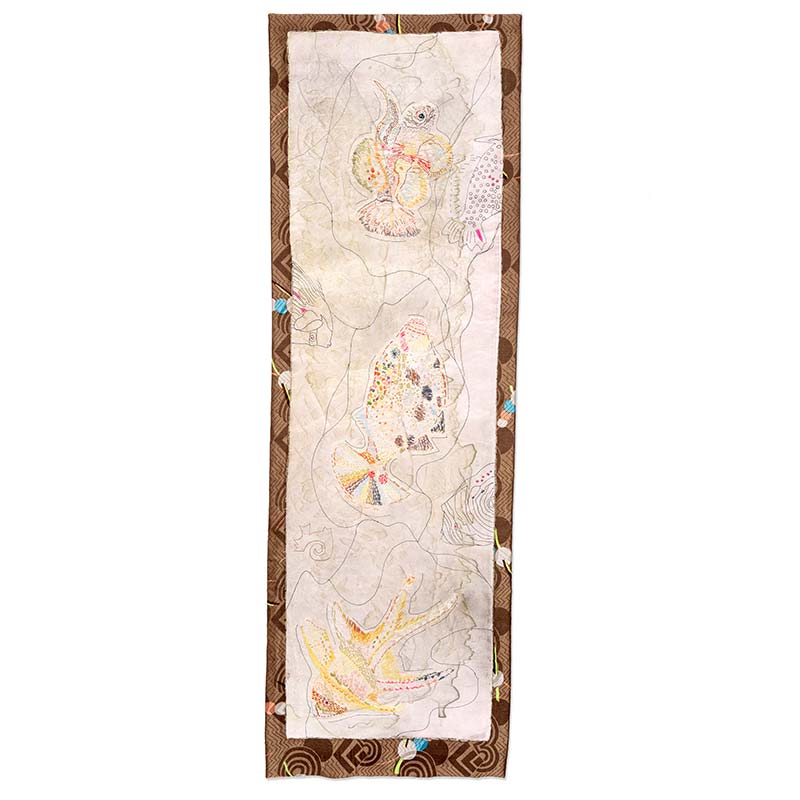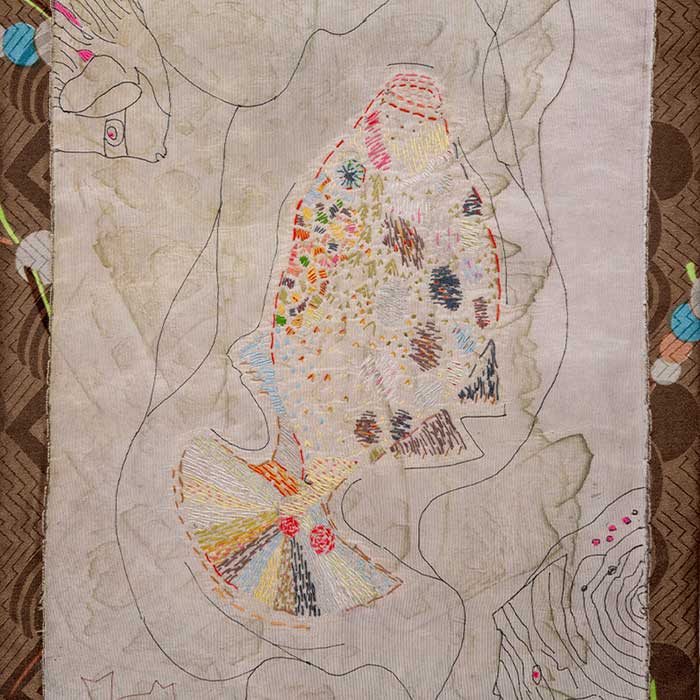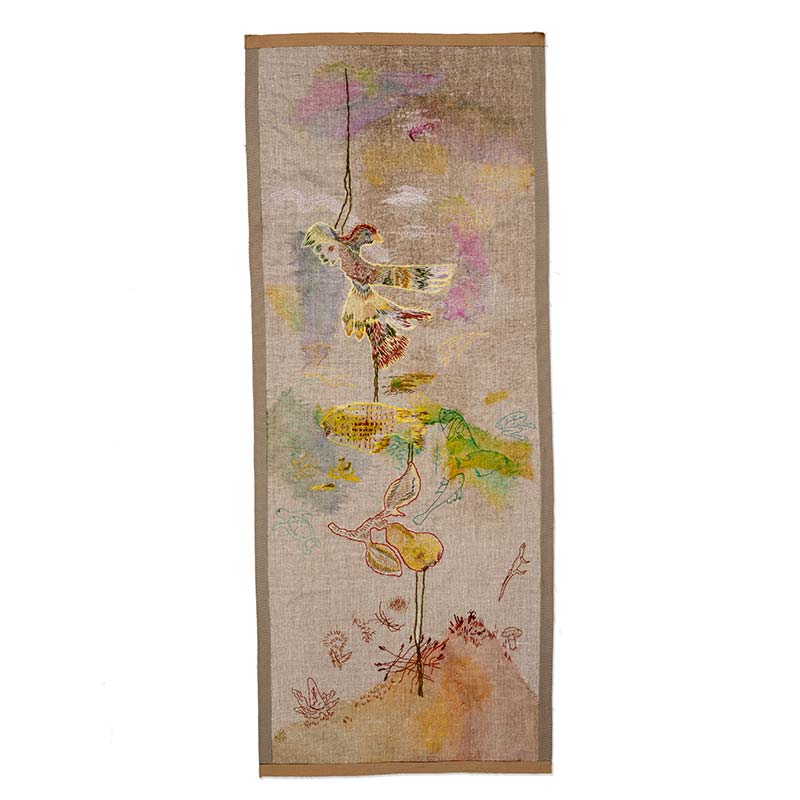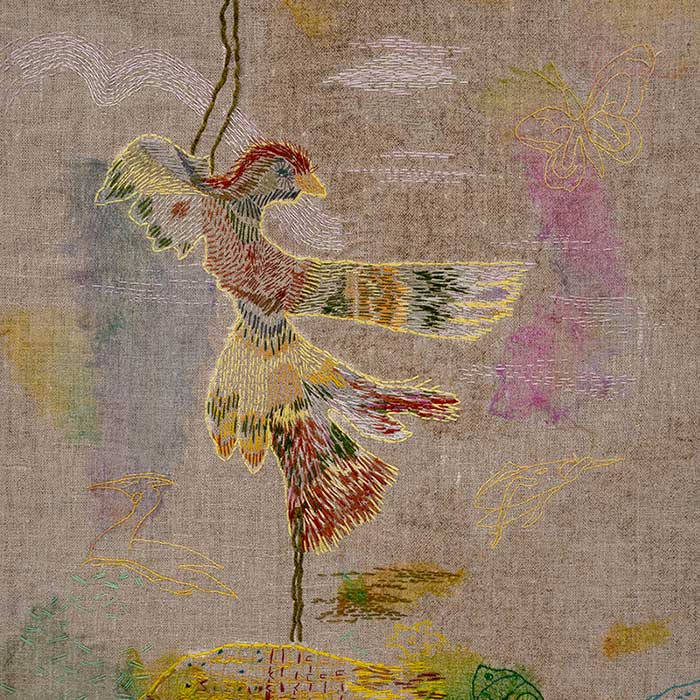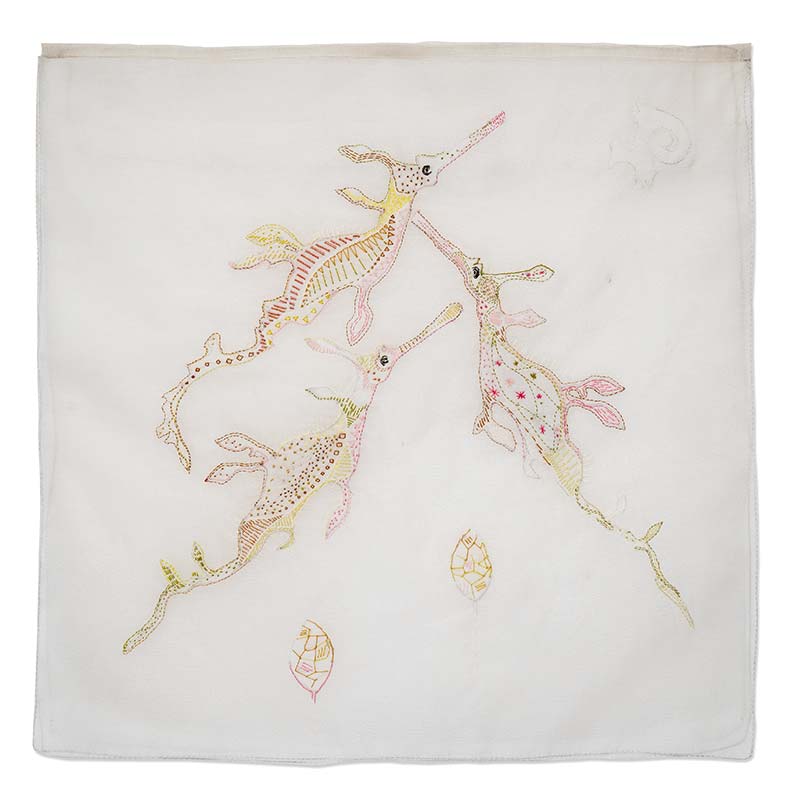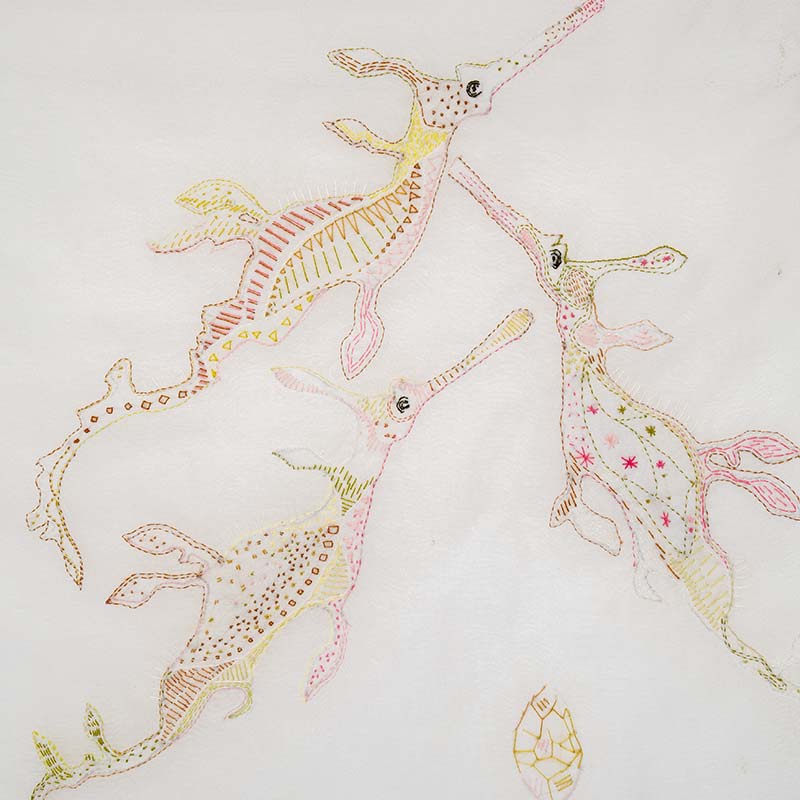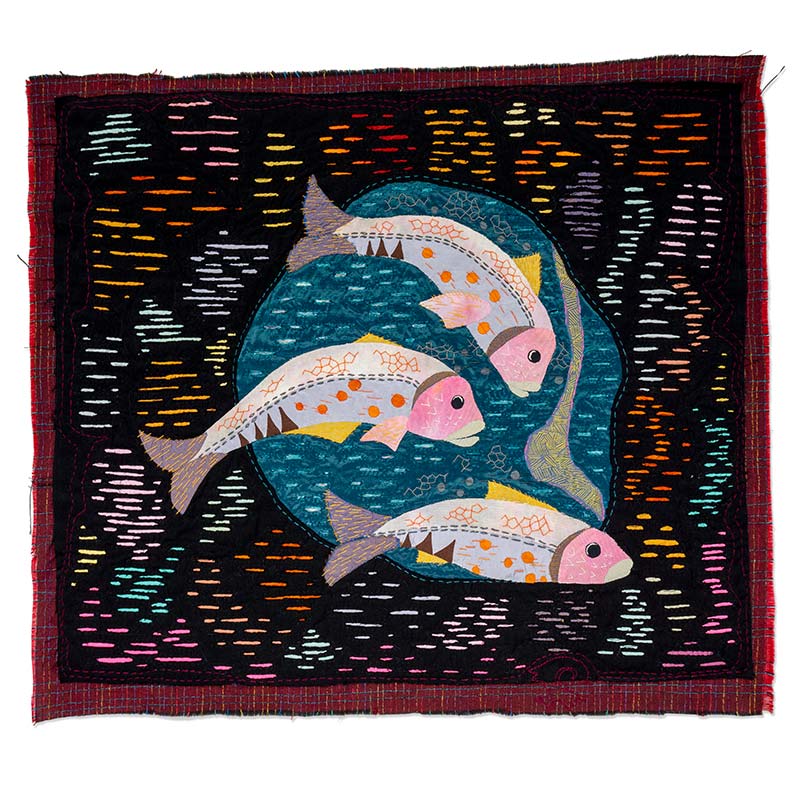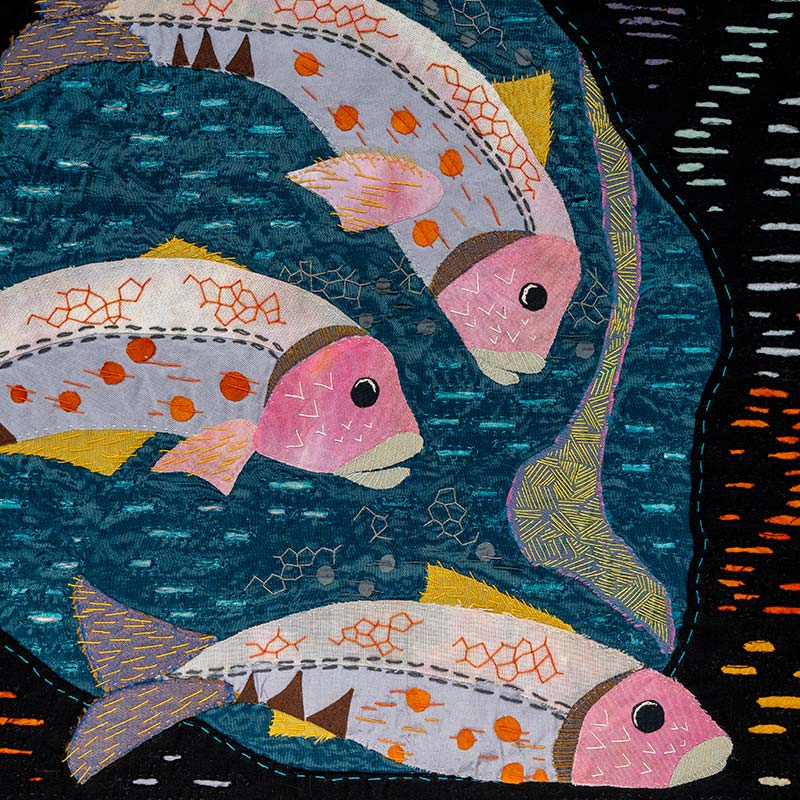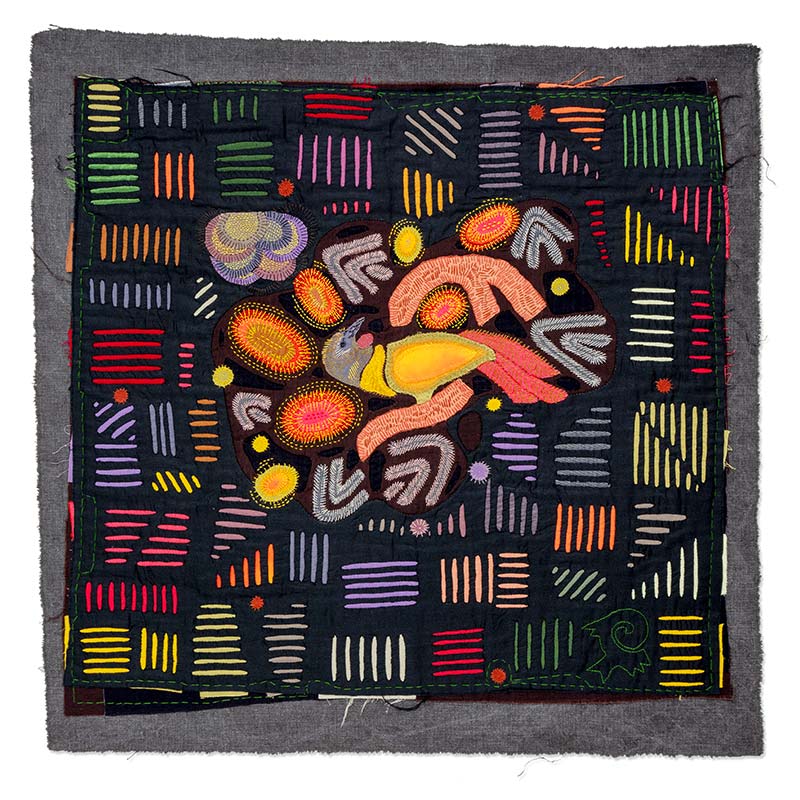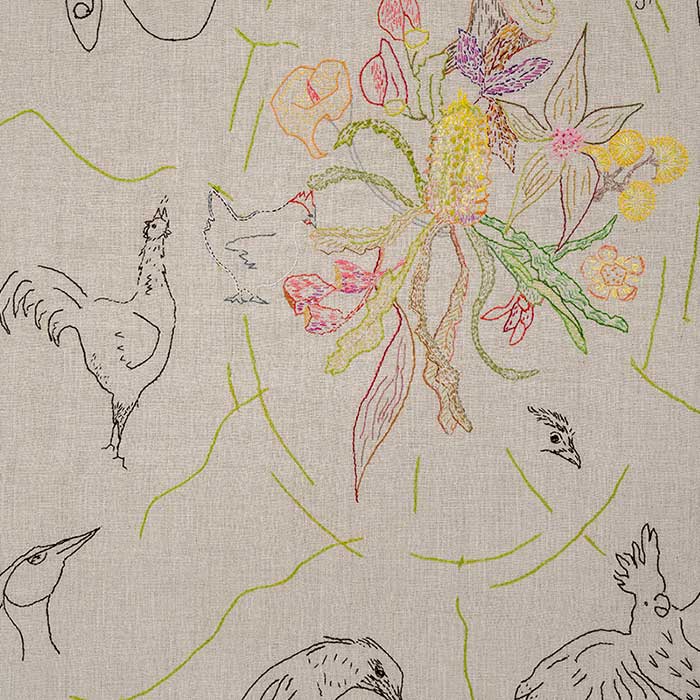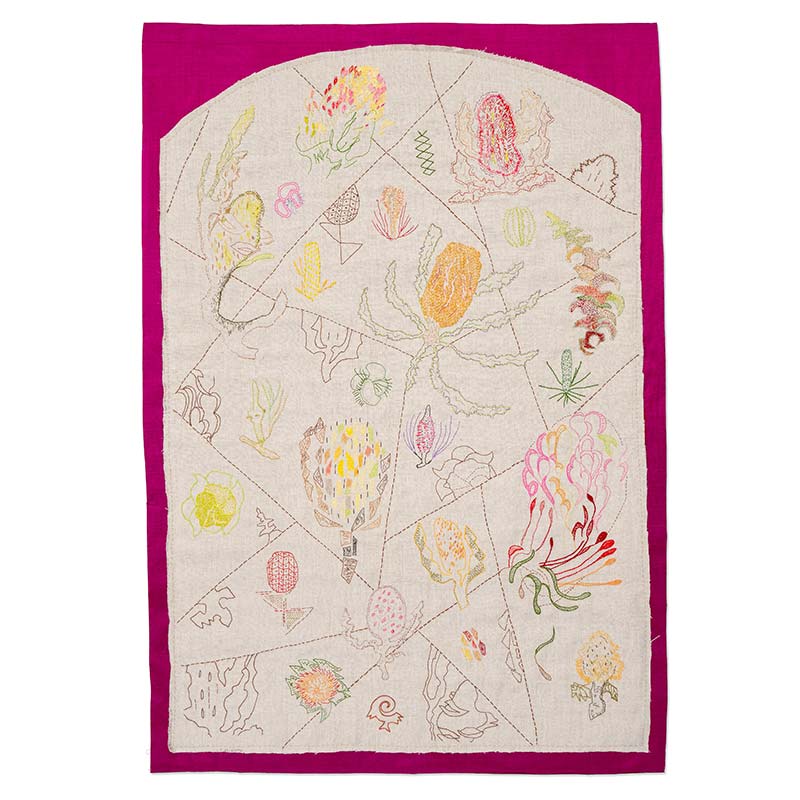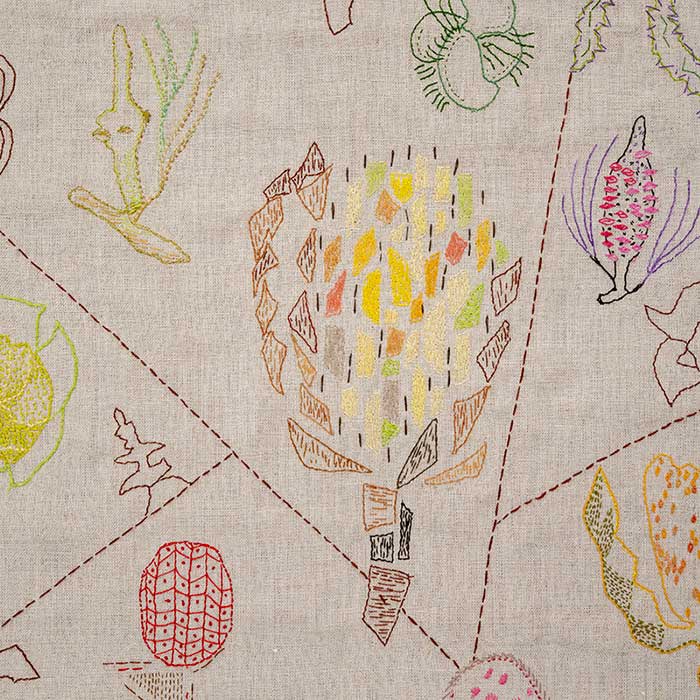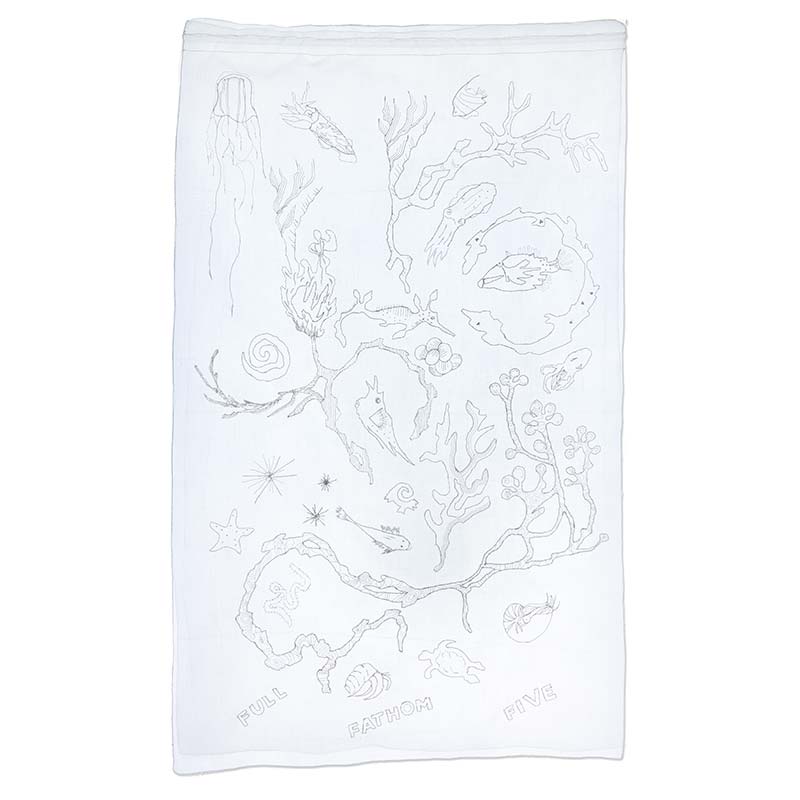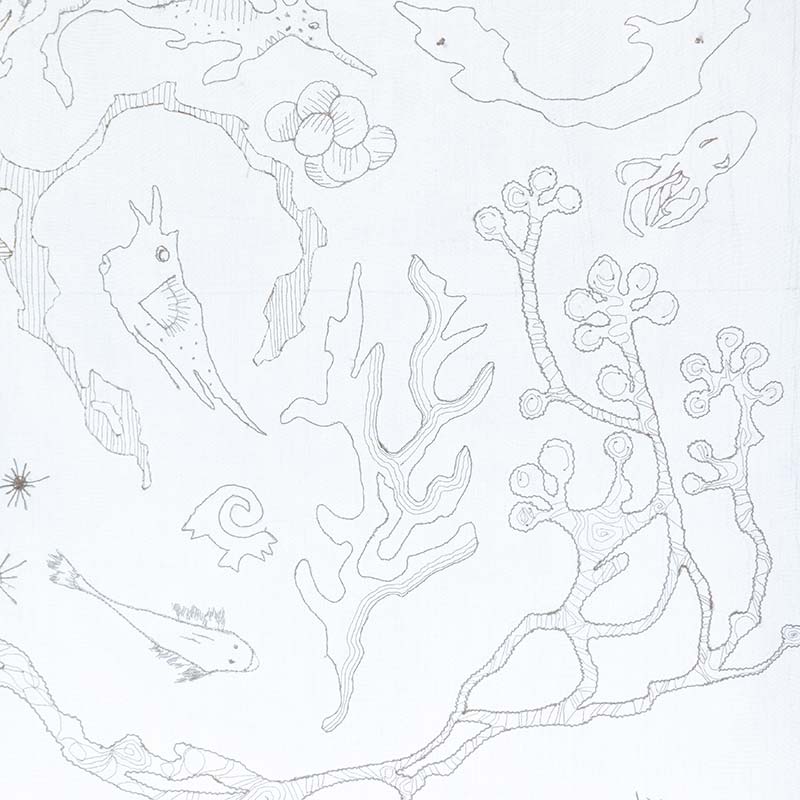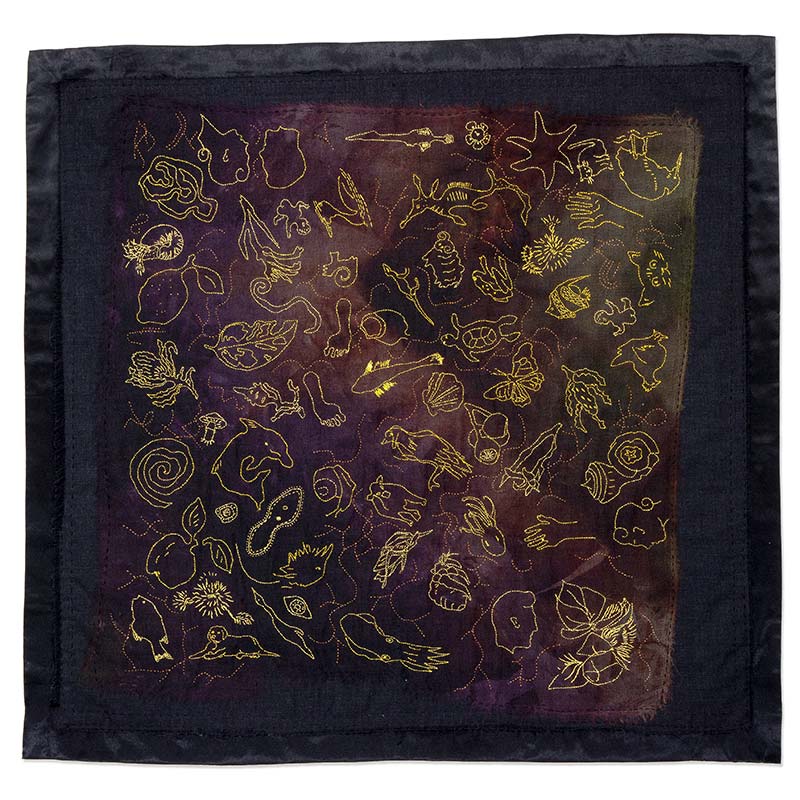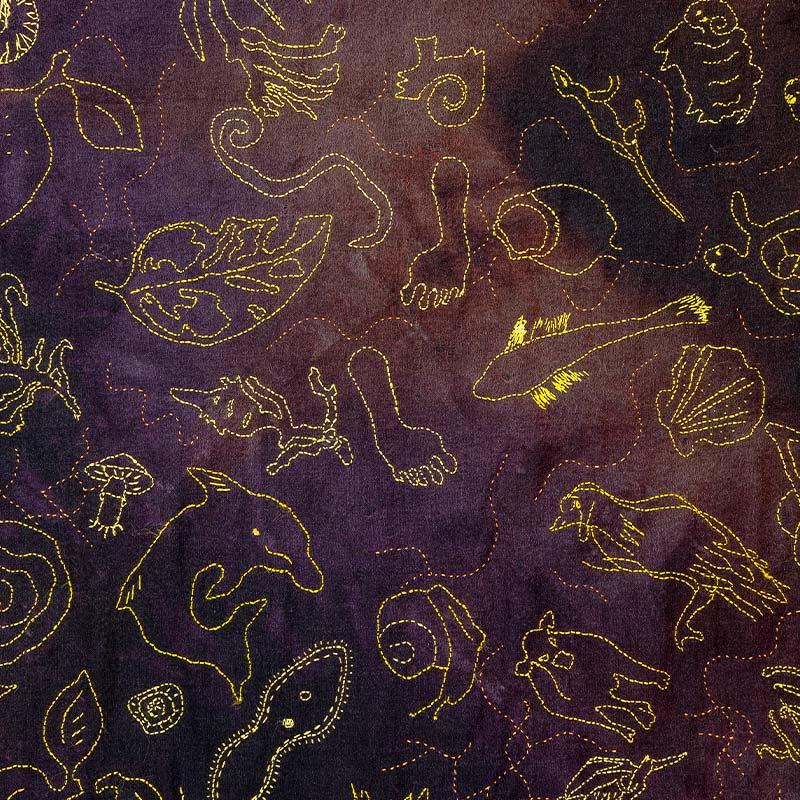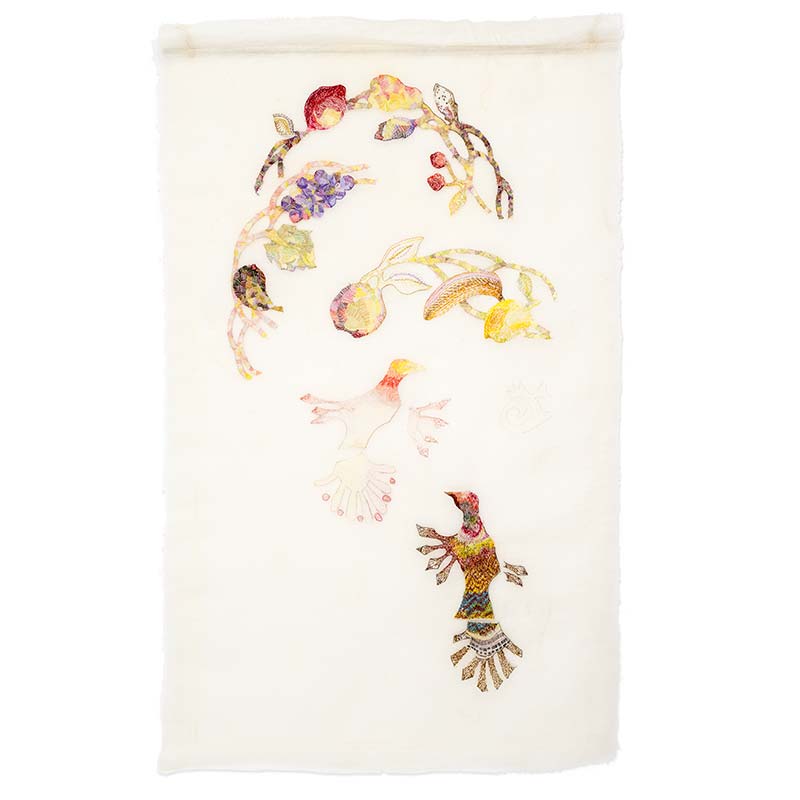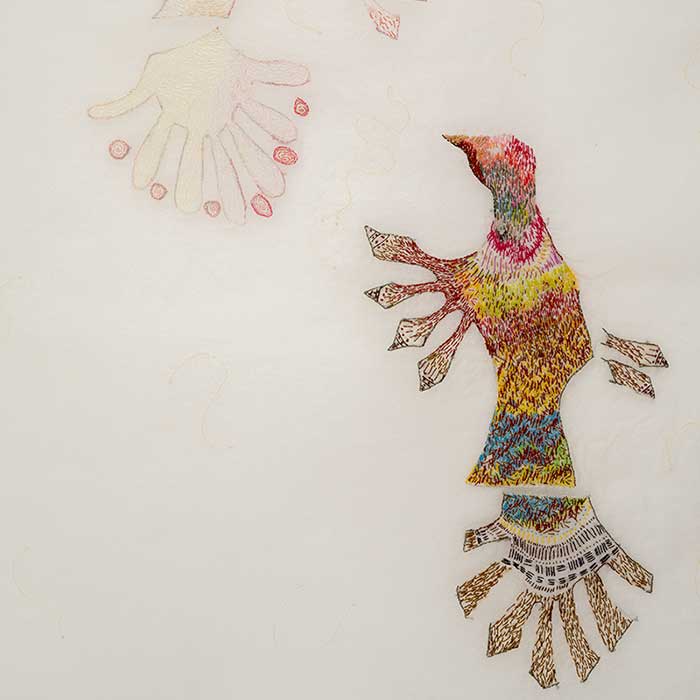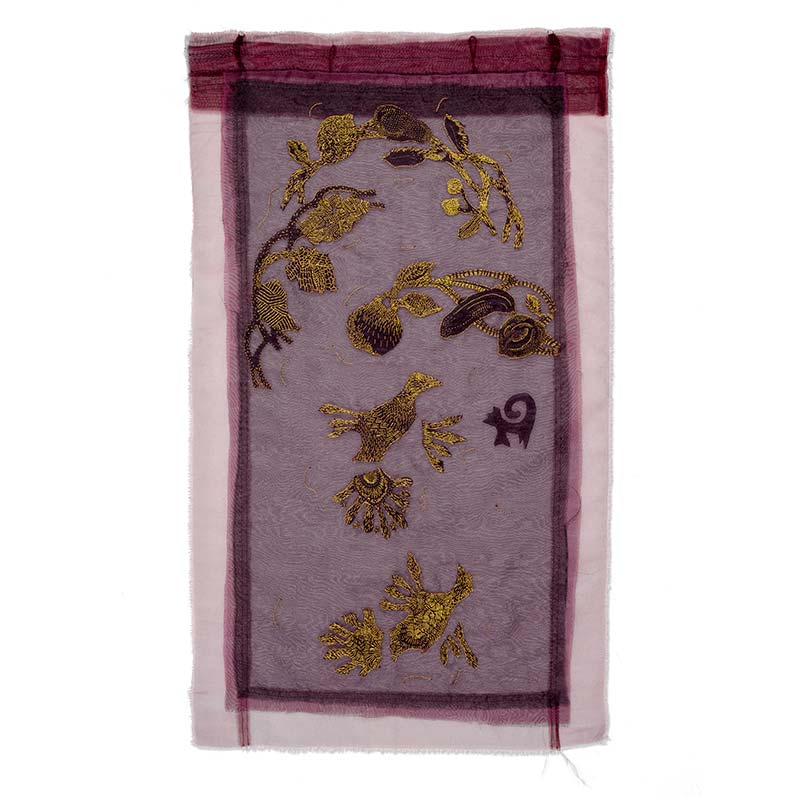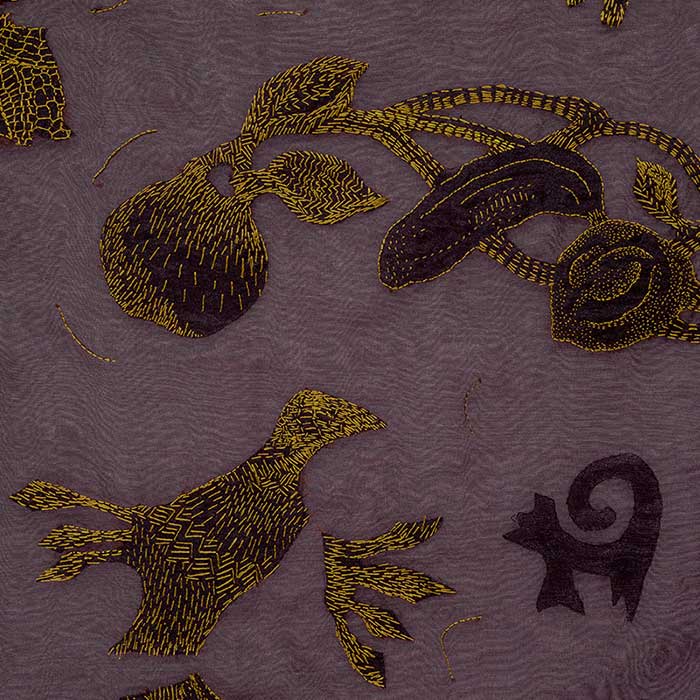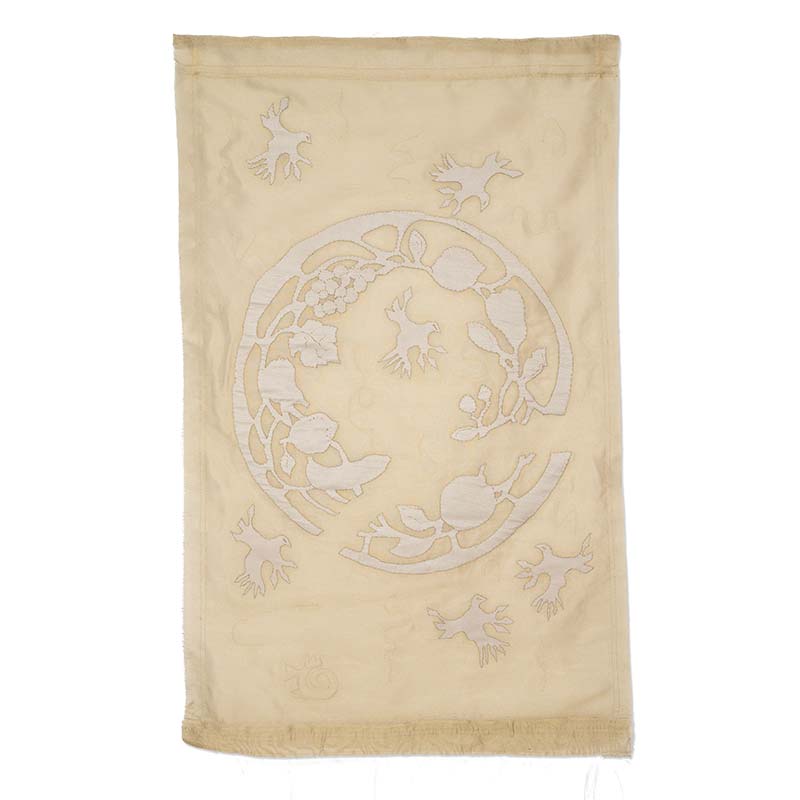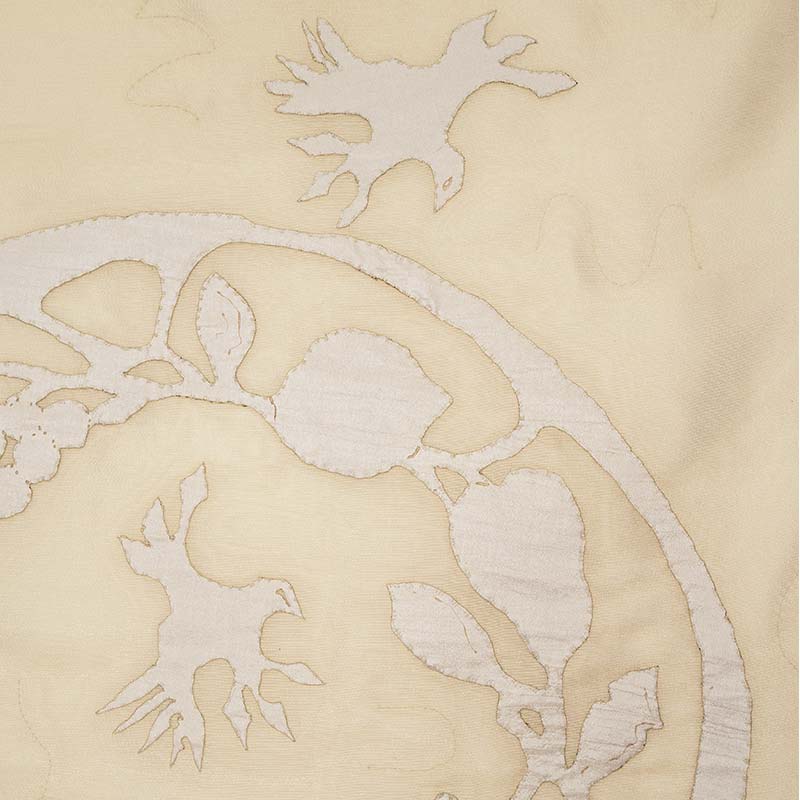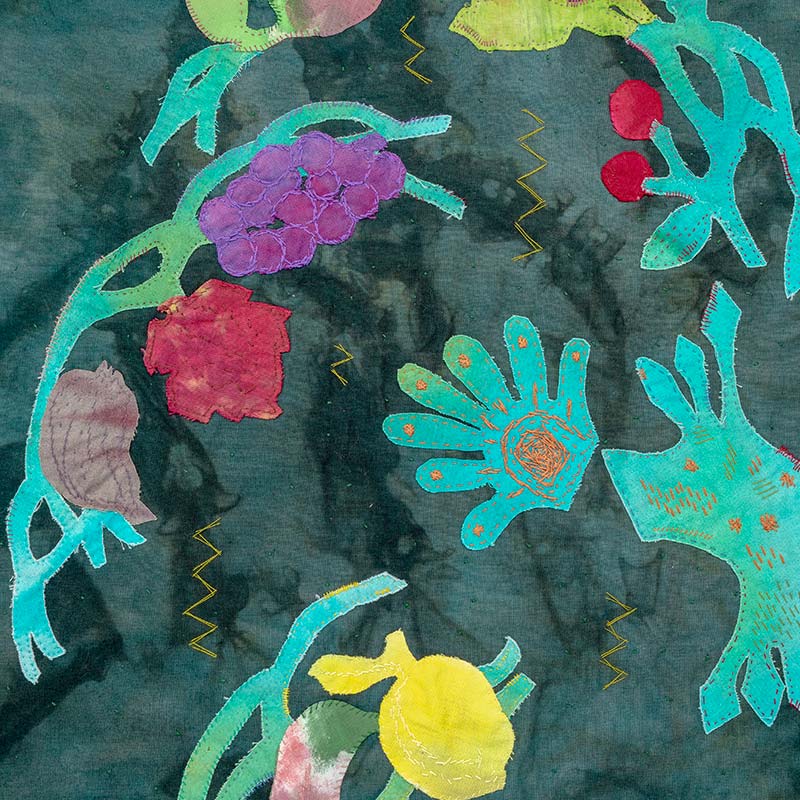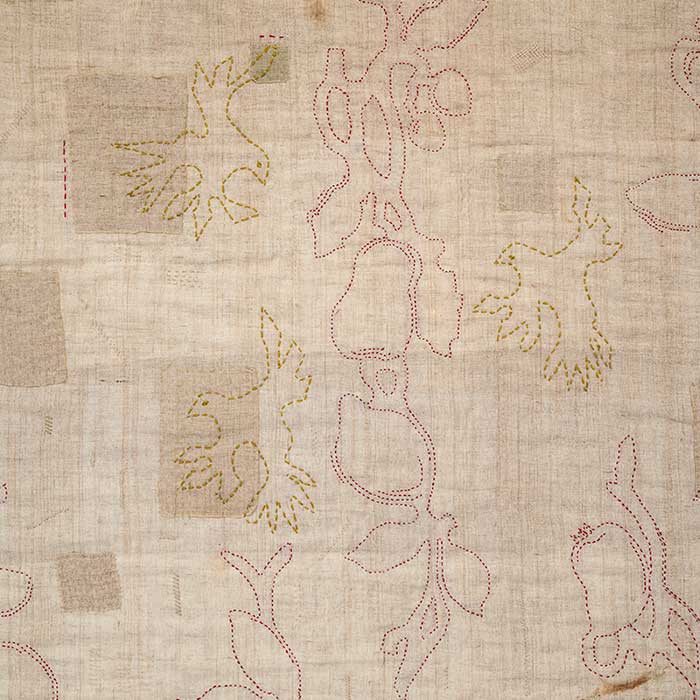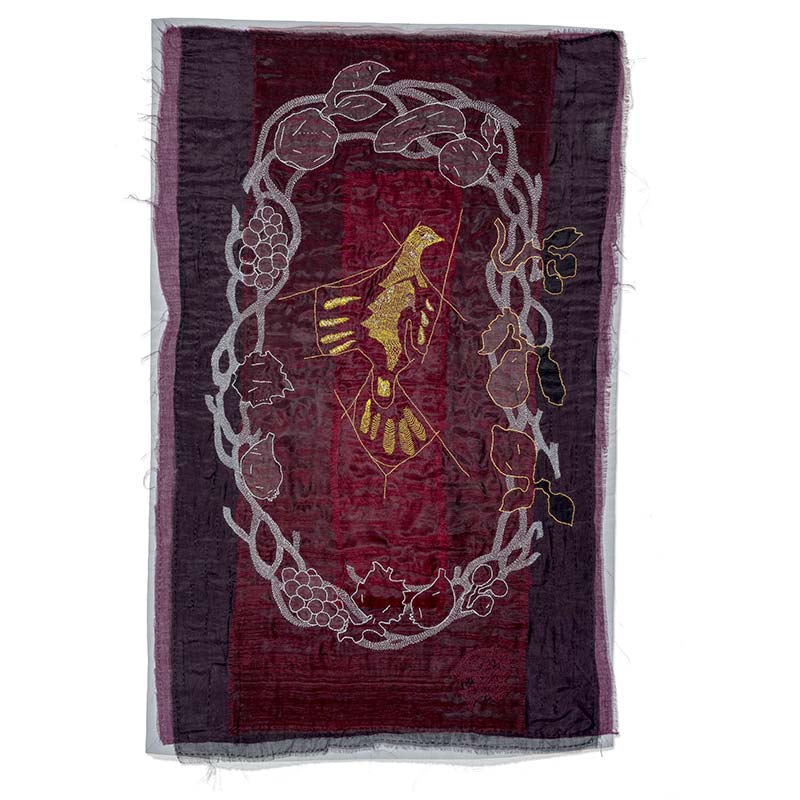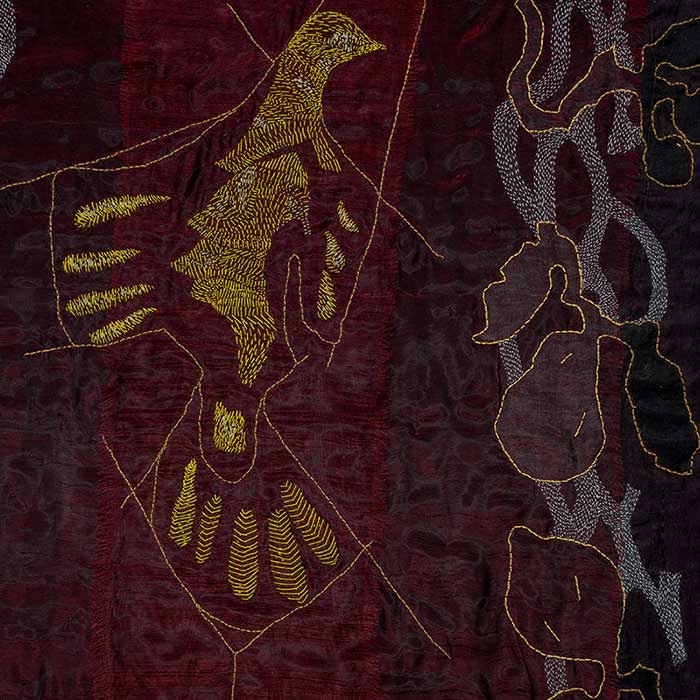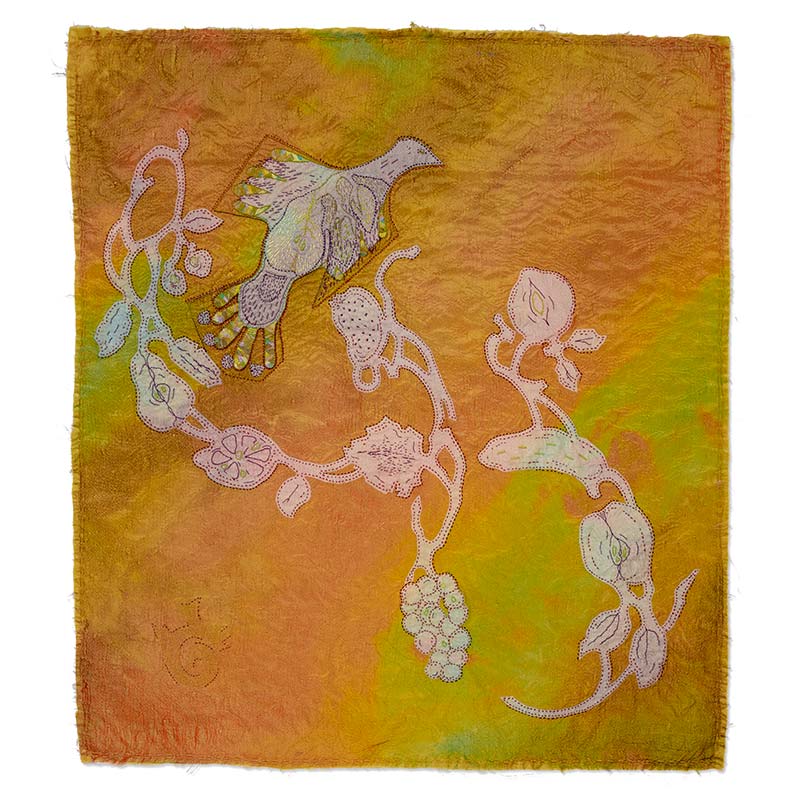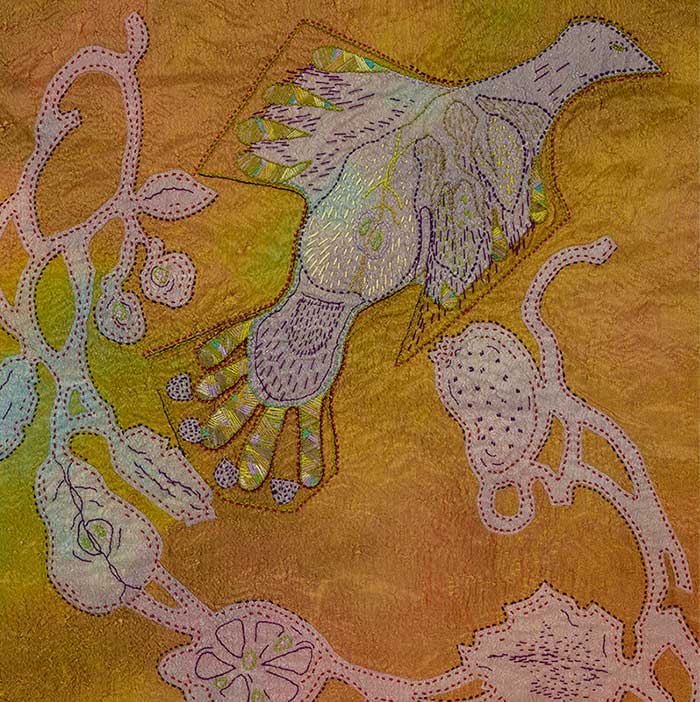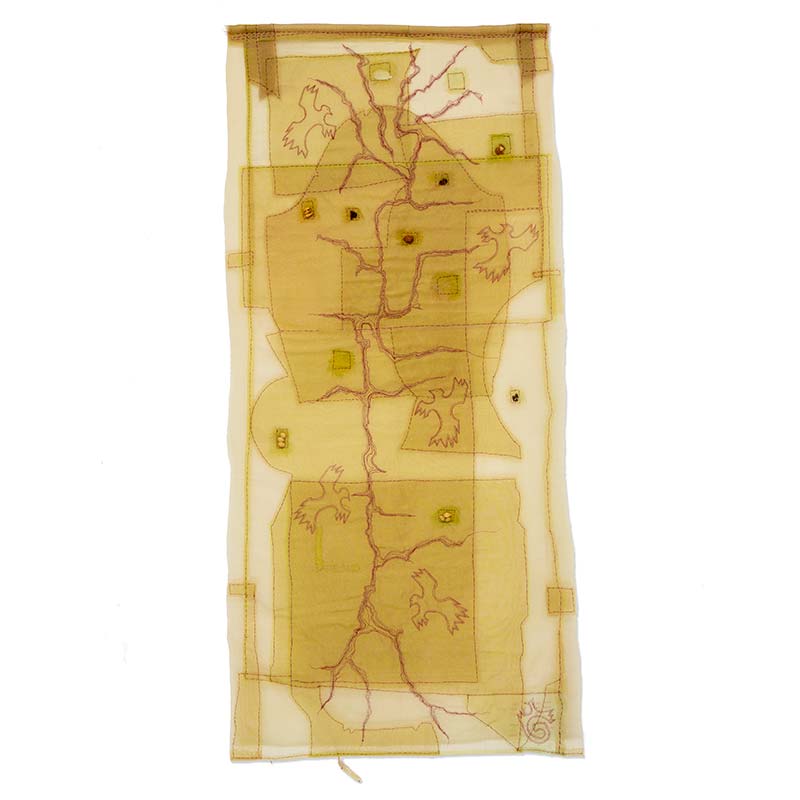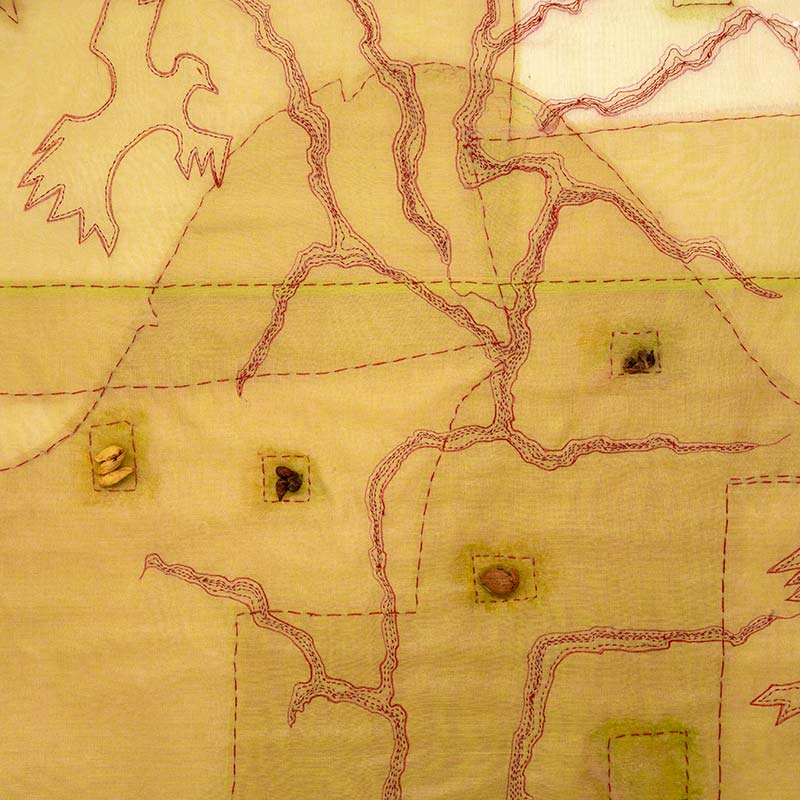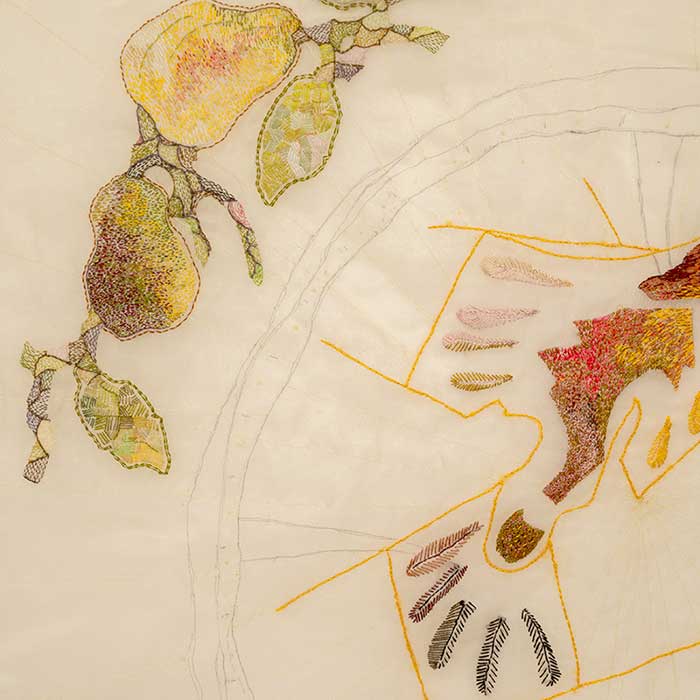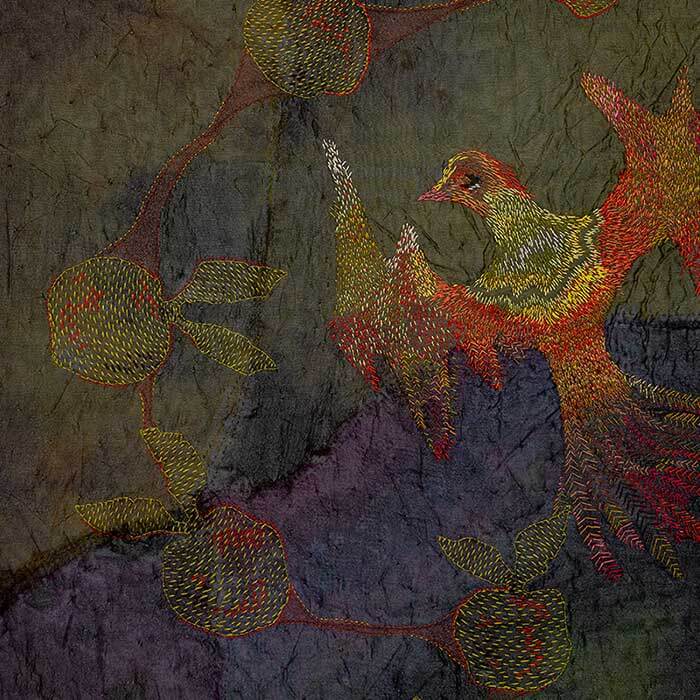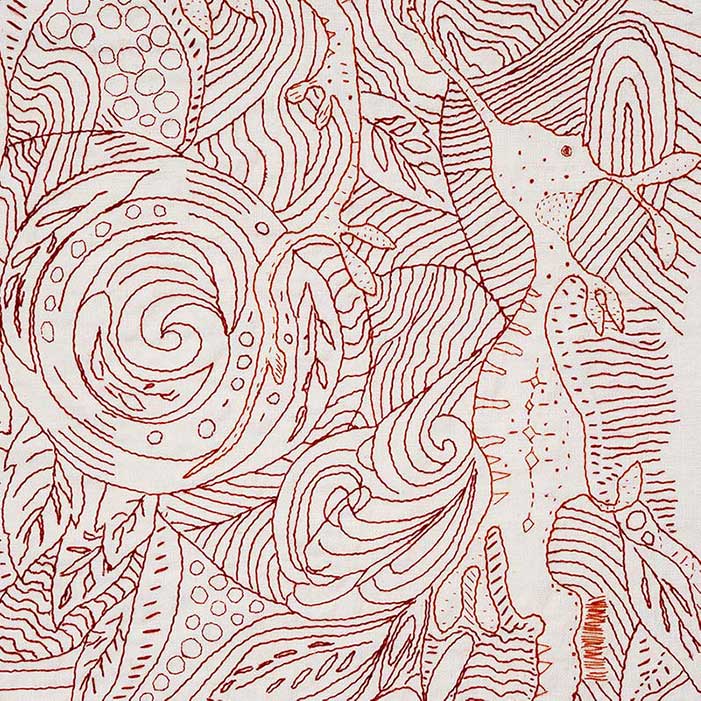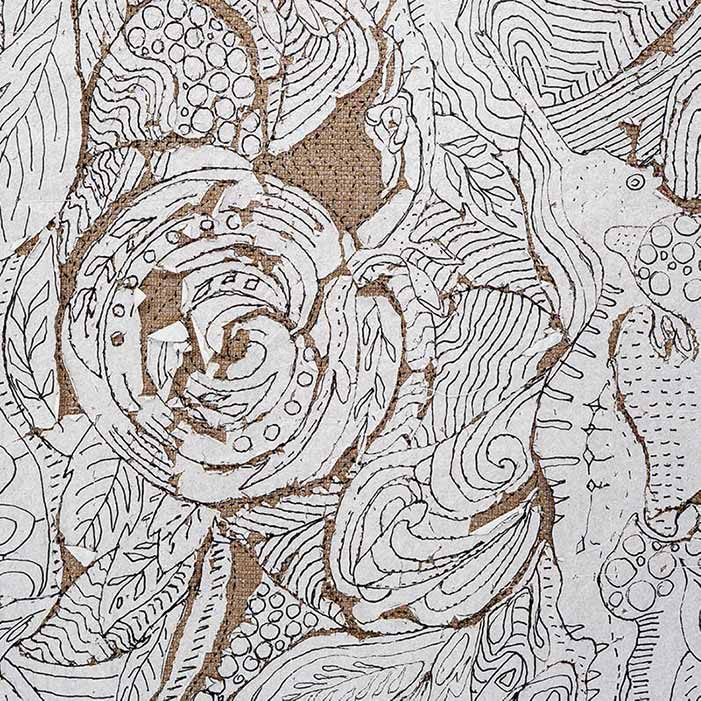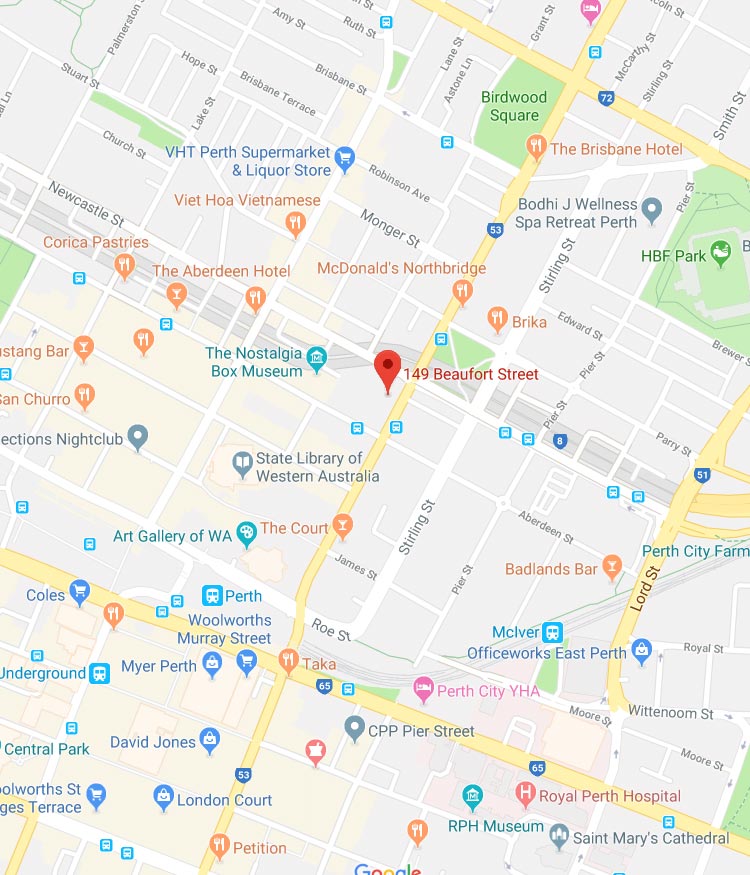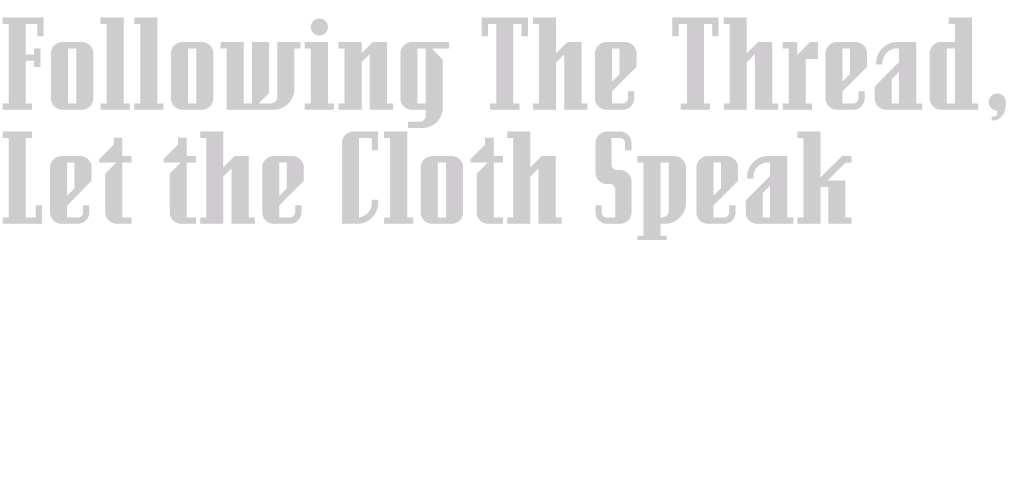
July 22nd – August 10th, 2019
Shopfront Gallery, North Metropolitan Tafe
149 Beaufort Street, Northbridge, WA

JULY 22ND – AUGUST 10TH, 2019
Shopfront Gallery
North Metropolitan Tafe
149 Beaufort Street
Northbridge, WA
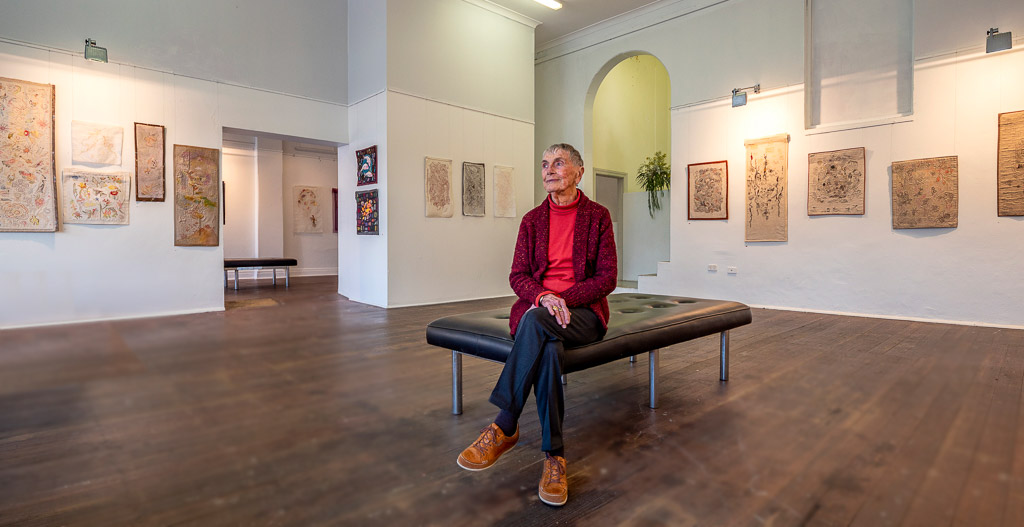
- - - - - - - - - - - - - - - - - -
When we are bored or desperate or overjoyed or curious, we have a special activity into which we can channel energy, with which we can express
our deepest hurts and losses,
our greatest joys and loves.
We can, in a special sense,
make our words flesh.
We, who can make, are the lucky ones.
- - - - - - - - - - - - - - - - - -
- - - - - - - - - - - - - - - - - -
When we are bored or desperate or overjoyed or curious, we have a special activity into which we can channel energy, with which we can express our deepest hurts and losses, our greatest joys and loves.
We can, in a special sense, make our words flesh.
We, who can make, are the lucky ones.
- - - - - - - - - - - - - - - - - -
FOLLOWING THE THREAD, LET THE CLOTH SPEAK
These works exhibited together at Shopfront Gallery represent the latest decade of Artwork by Marjorie Coleman.
Shopfront Gallery, North Metropolitan Tafe, 22 July – 10 August, 2019
Marjorie Coleman has long been one of Australia’s most respected quiltmakers, acknowledged as a pioneer and leader in the field. By the 1970’s she was established as a national ground-breaker in the making of contemporary quilts with a strong Australian identity, featuring designs based on native flora and fauna.
Beyond the influence of her extraordinary body of work, Marjorie has contributed much time and energy to the advancement of the field. Many have benefitted from her teaching and from her involvement in the development of exhibition opportunities in formal gallery spaces. Always willing to offer an encouraging word, she has informally mentored many a younger maker.
However it is through her art that Marjorie speaks most powerfully. Her textile works are the product of a sharp intellect, astute observation, and empathy with her subject matter. They invariably exhibit fine craftmanship, but this is subjugated to their purpose as a means of self-expression.
Over the years Marjorie has explored many unconventional materials and processes. She describes all her works as explorations, with a constant tension between discovering new processes whilst submerging these into what the piece is saying.
“I want to master technique and then forget it. When it is the how of the piece that first draws attention rather than the what, I feel that the piece is disappointing and will eventually pall.”
After many decades of arts practice, Marjorie is still finding new means to give voice to her ideas, but latterly her interest has turned from the quilt medium to the predominant use of stitch, sometimes as line, sometimes as blocks of colour, but always following her personal narrative.
“I fancy that the stitch stands as something like the alphabet: not existing in its own right unless and until it serves the greater purpose of conveying something beyond itself.”
Now in her nineties, Marjorie exhibits less often but has continued to produce new work with a strength and vigour that belies her age. This exhibition draws from a prodigious body of work made in the last decade, which she describes as having been stitched for her own enlightenment.
“I regard myself a stitcher of ideas. To work on an idea in whatever medium is fulfilling and even exciting; there is no space for boredom or unhappiness.”
These recent works, largely stitched on linen or silk organza, are restrained, often delicate and sometimes ethereal. They are introspective, drawing on a lifetime of experiences and ideas and reflecting Marjorie’s passion for the bush and the underwater world. The same Australian native plants and birds that appeared in her early work are still present. There are also the sea creatures, such as the weedy sea dragons, familiar to Marjorie from her many years of snorkelling among them. One work might ruminate on the inhabitants of a limestone wall passed on a ramble, another might explore the habits of water birds observed over the seasons at nearby Lake Monger. Bush birds might join Marjorie in searching for the Tree of Life.What remains constant is Marjorie’s intention to reflect her life as a contemporary Australian, living in this place at this time.
WENDY LUGG, 2019
CLOSE X
The Search for the Tree of Life
The Search for
the Tree of Life
There are ten pieces in the series that explore different paths for the search. The searcher finds itself in a number of situations in it’s quest for the tree of life.
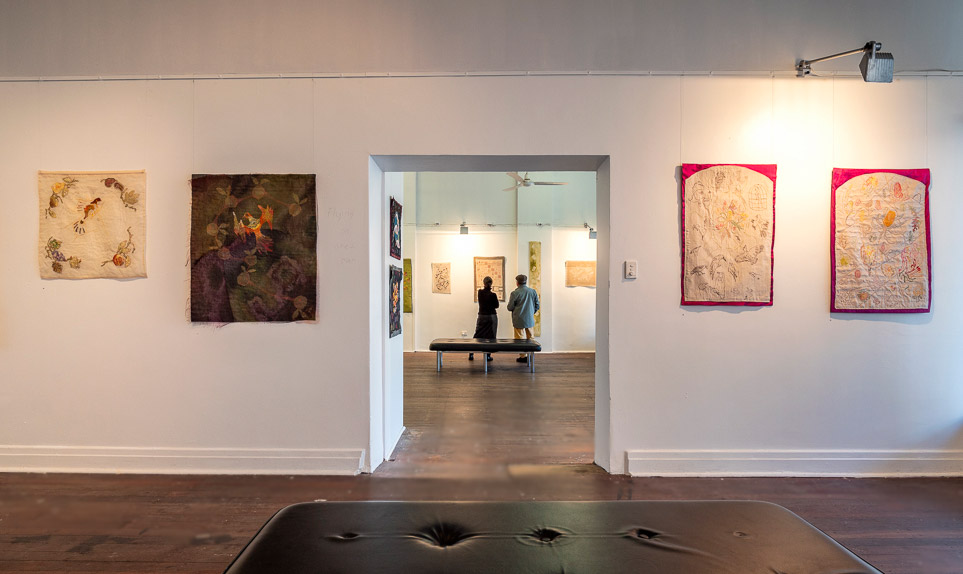
- - - - - - - - - - - - - - - - - -
It seems to me to be quite important that what we make reflects ourselves. Whether we stitch or whether we hammer seems to be not as important as the fact that we are giving shape to our sensibilities, colour to our insights.
- - - - - - - - - - - - - - - - - -
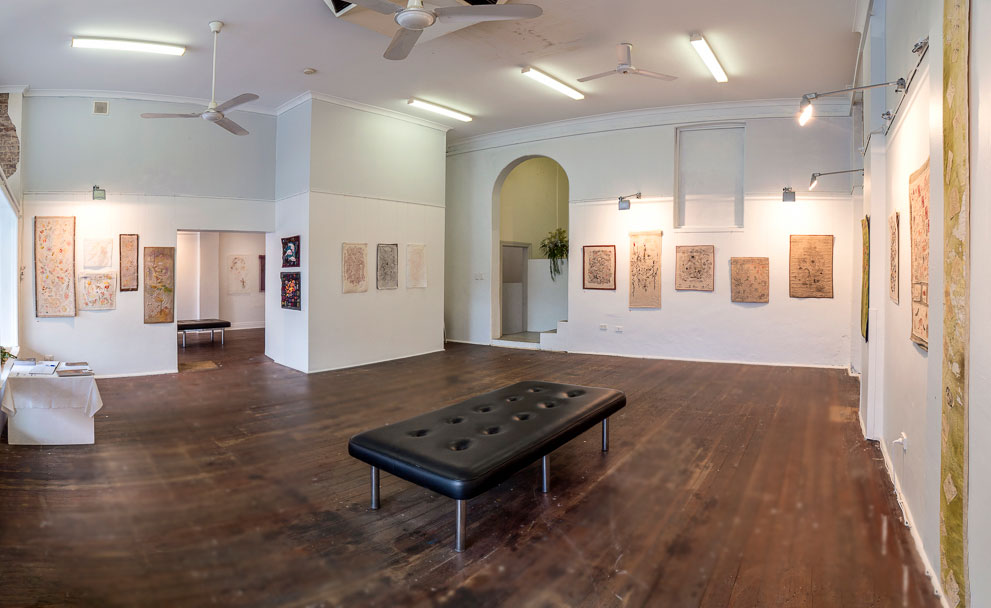
- - - - - - - - - - - - - - - - - -
I fancy that the stitch stands as something like the alphabet:
not existing in its own right unless and until it serves the greater purpose of conveying something beyond itself.
- - - - - - - - - - - - - - - - - -
MARJORIE COLEMAN 2025
